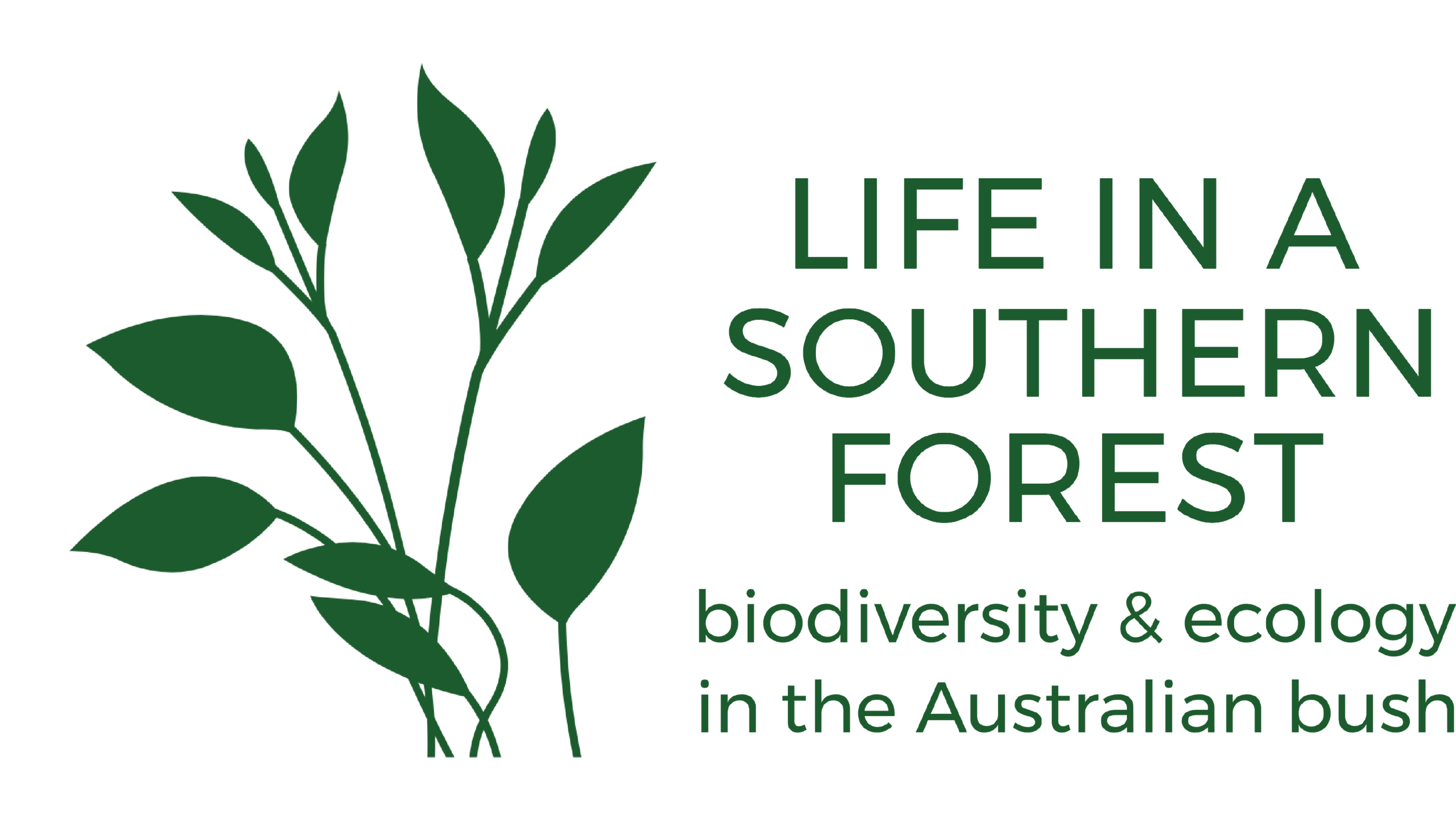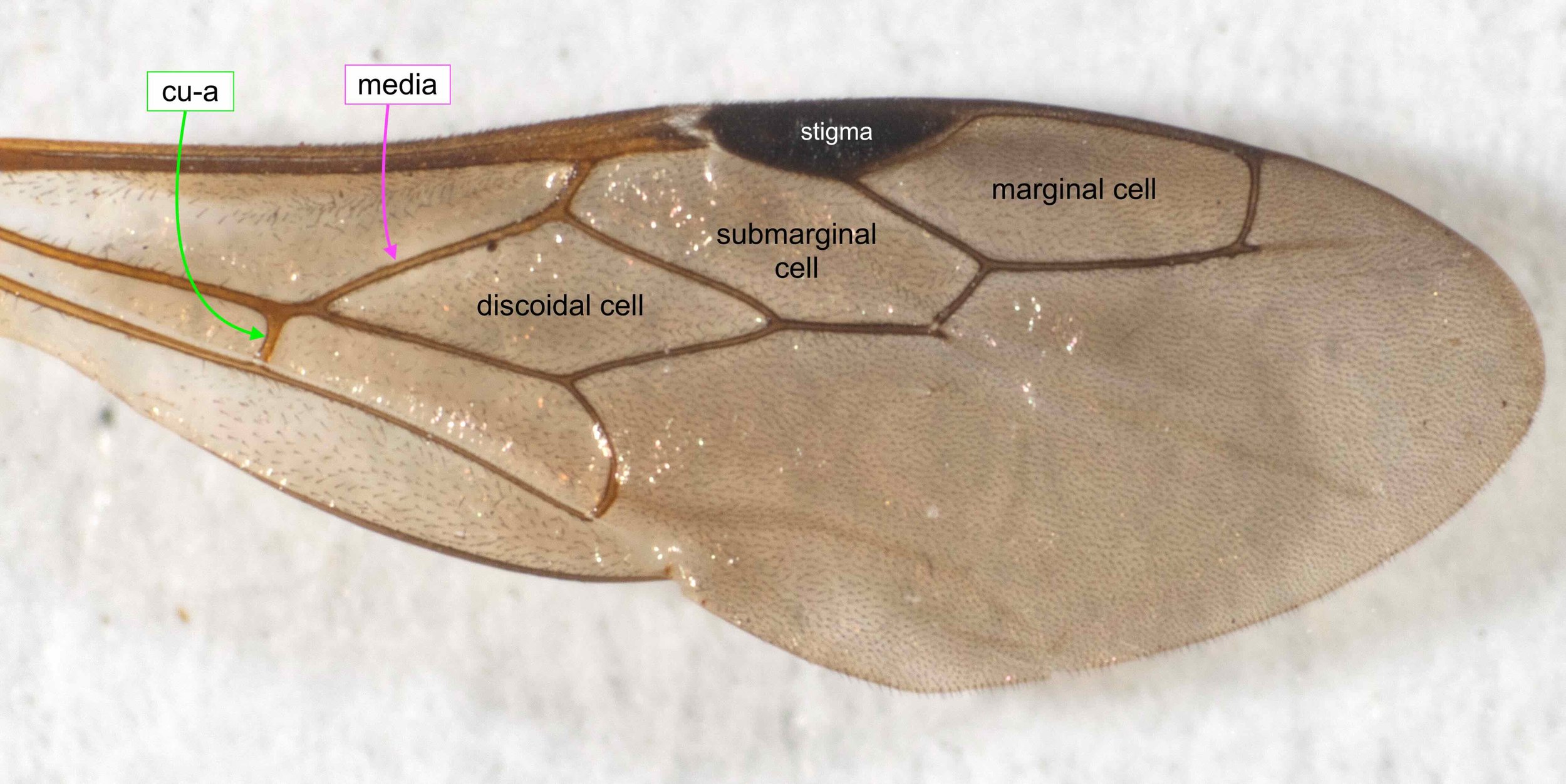
forewing venation & cells
CRABRONINI have:
- a single submarginal cell
- media diverging beyond cu-a
- stigma tapering to a point well beyond base of marginal cell
- marginal cell apex truncate or rounded (not pointed)
- single discoidal cell (usually)
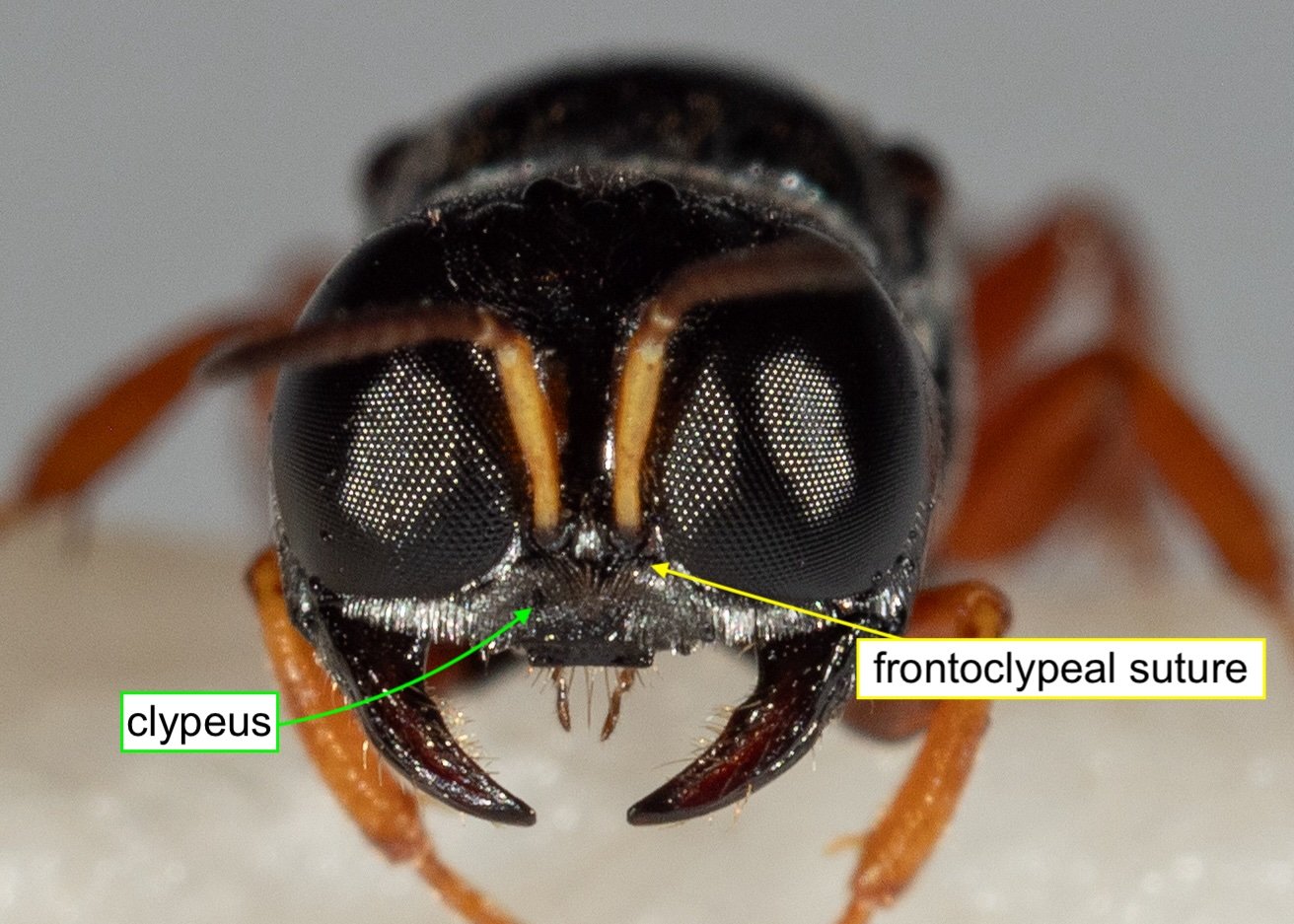
antennal insertion, clypeus, eye shape
CRABRONINI have:
- antennae inserted low on face, sockets close to frontoclypeal suture
- eyes nearly always converging below, often strongly
- eye facets usually enlarged ventrad, crowding the antennal sockets
- face often with silvery transverse clypeus & vertical pale scapes forming a distinctive U shape
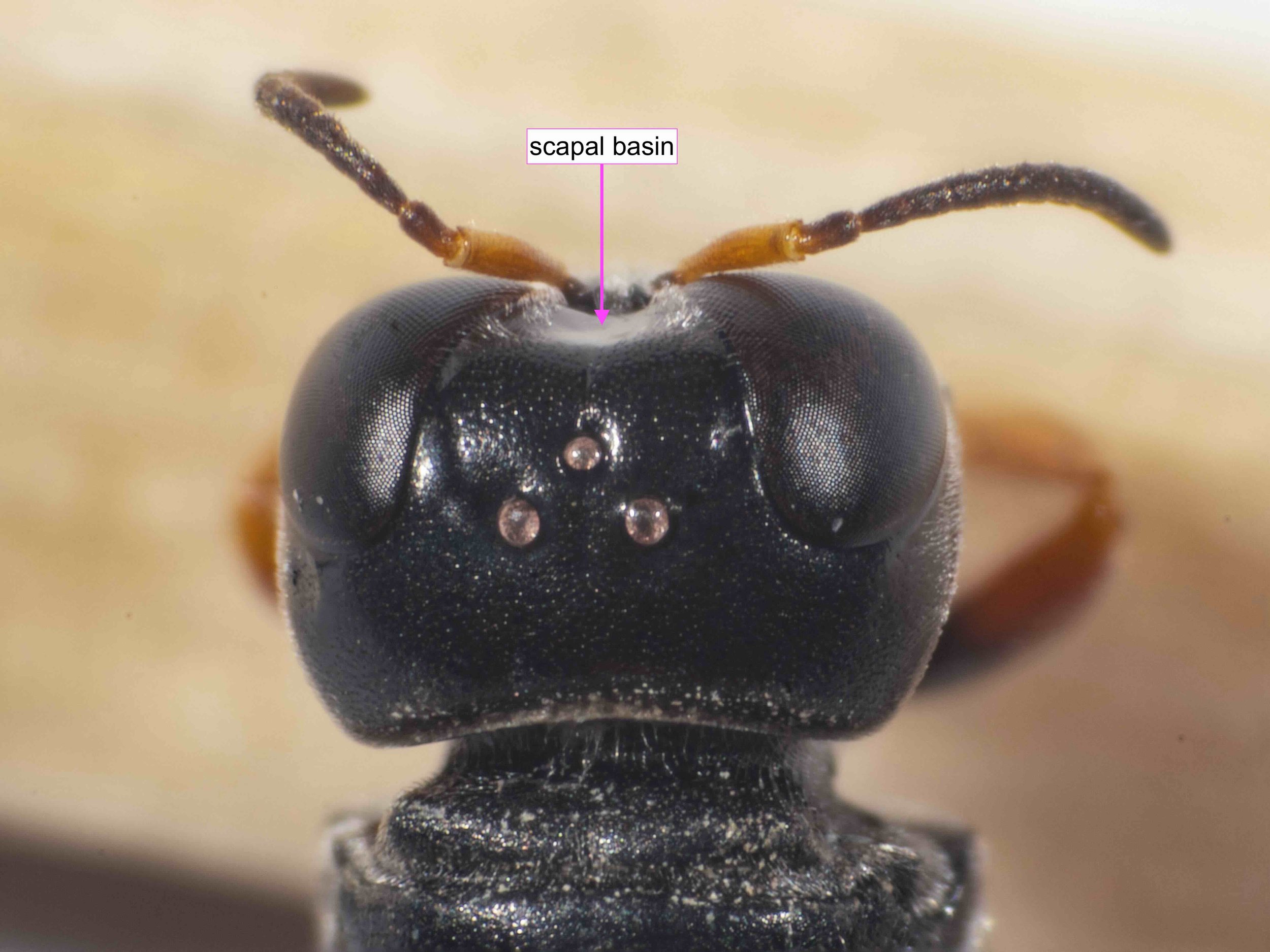
ocelli, head & eye shape
CRABRONINI have:
- normal ocelli
- large cuboidal head
- eye entire, not notched or strongly emarginate
- eyes nearly always converging below, often strongly
- frons often with scapal basal
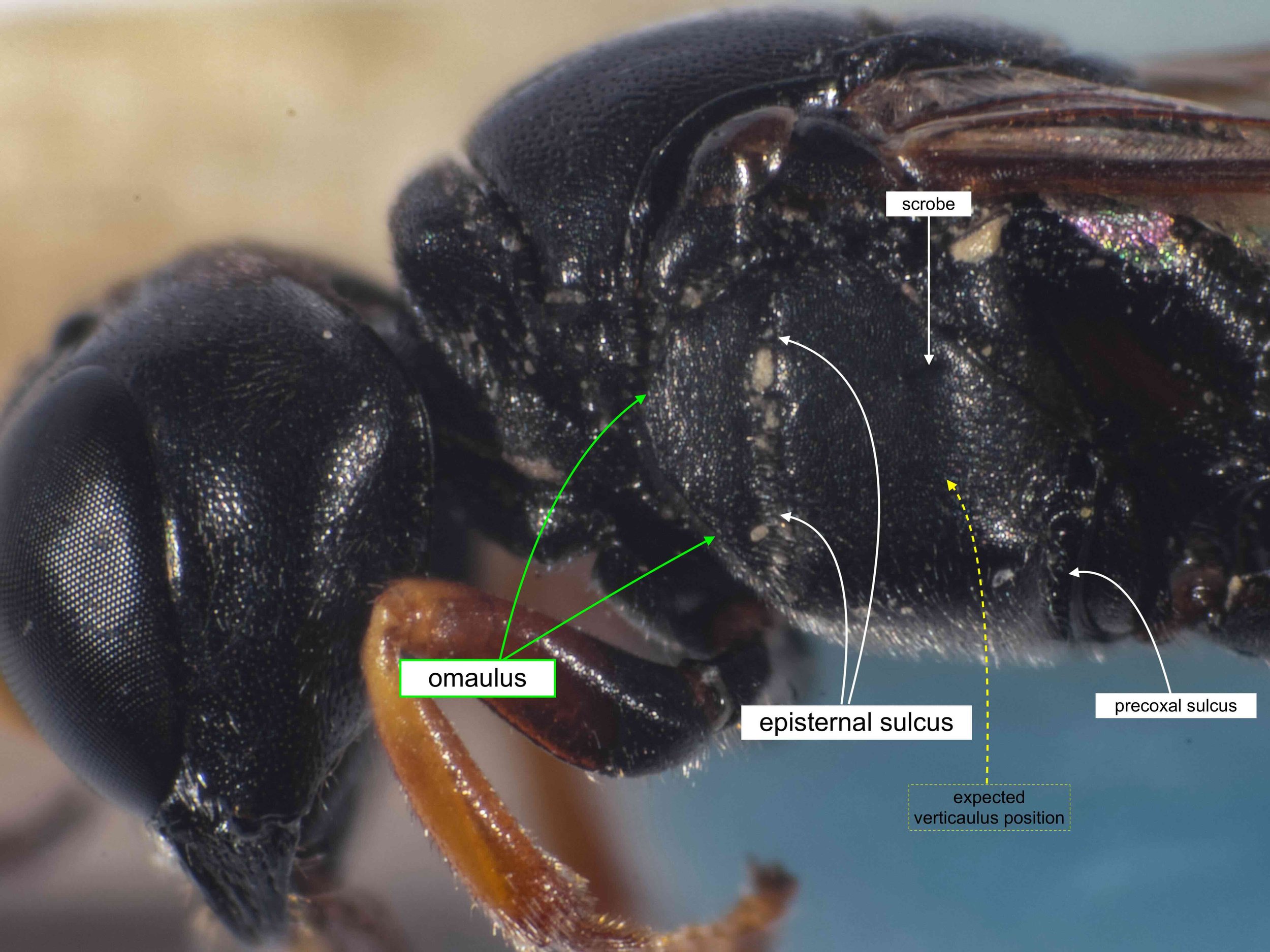
mesopleural architecture
CRABRONINI have:
- episternal sulcus present
- scrobal sulcus usually absent
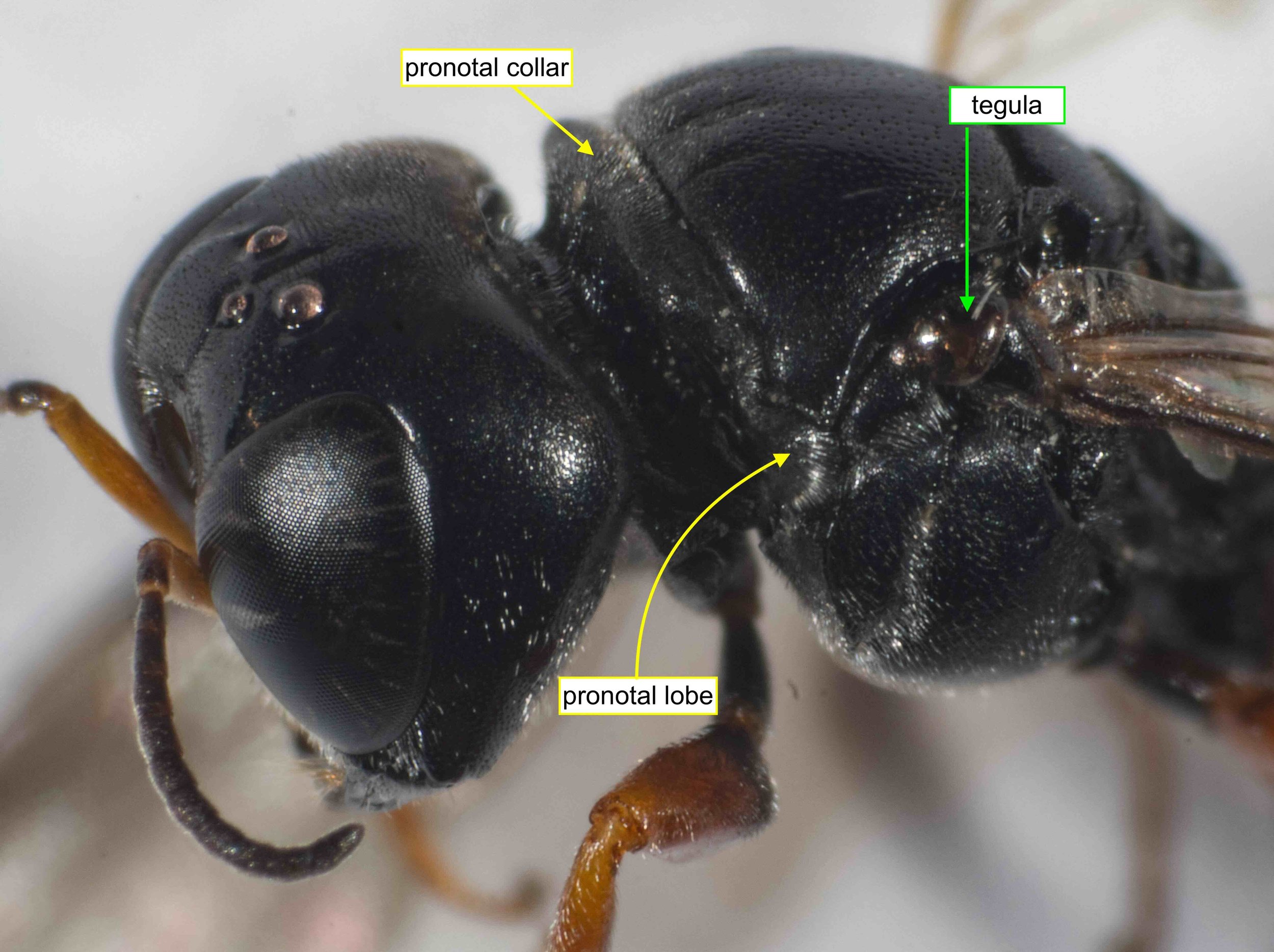
pronotum shape
CRABRONINI have:
- pronotal collar short
- pronotal lobe & tegula separated
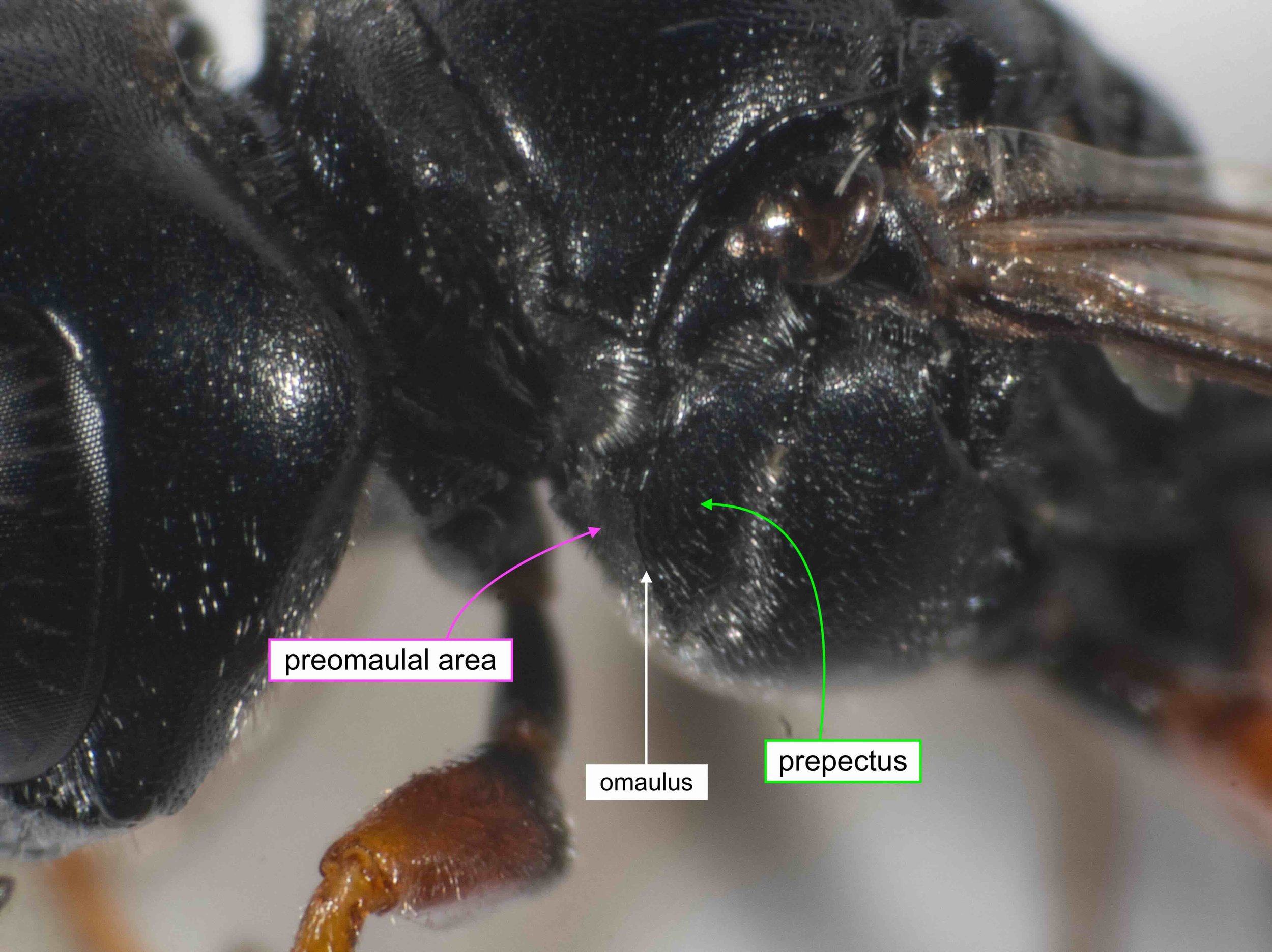
mesopleural architecture
Pseudoturneria have:
- wide, flat perpectus forming a perpendicular plane to flat omaulal area
- omaulus strong
These features distinguish Pseudoturneria from those Rhopalum species that have a much reduced peduncle.

mesopleural architecture
Pseudoturneria have:
- omaulus strong, continuous with postspiracular carina dorsally & reaching episternal sulcus ventrally
- episternal sulcus wide, crenulate
- scrobe small
- verticaulus absent
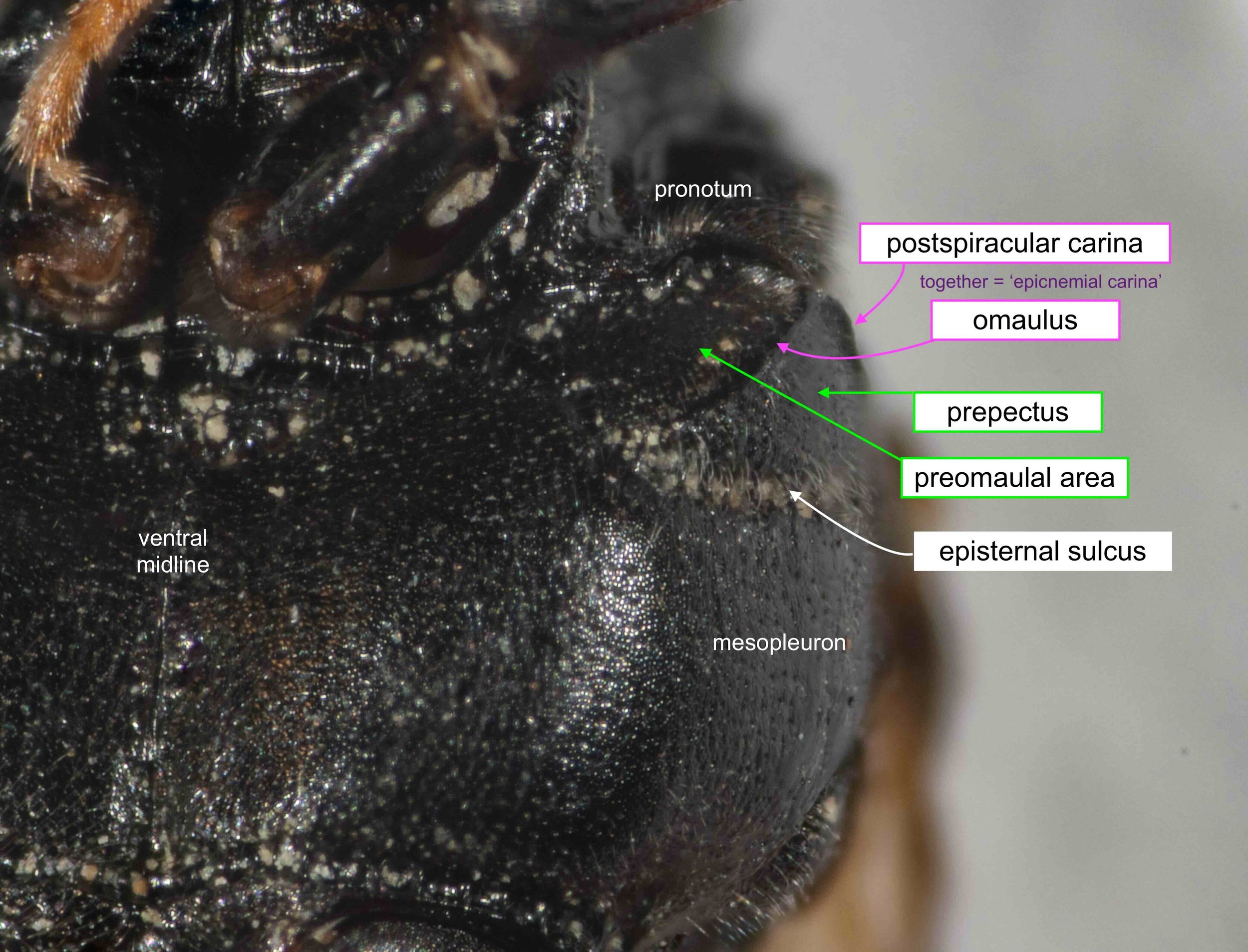
mesopleural architecture
Pseudoturneria have:
- wide, flat perpectus forming a perpendicular plane to flat preomaulal area
- omaulus strong, continuous with postspiracular carina dorsally (collectively called the epicnemial carina by Leclercq … carène épicnémiale)
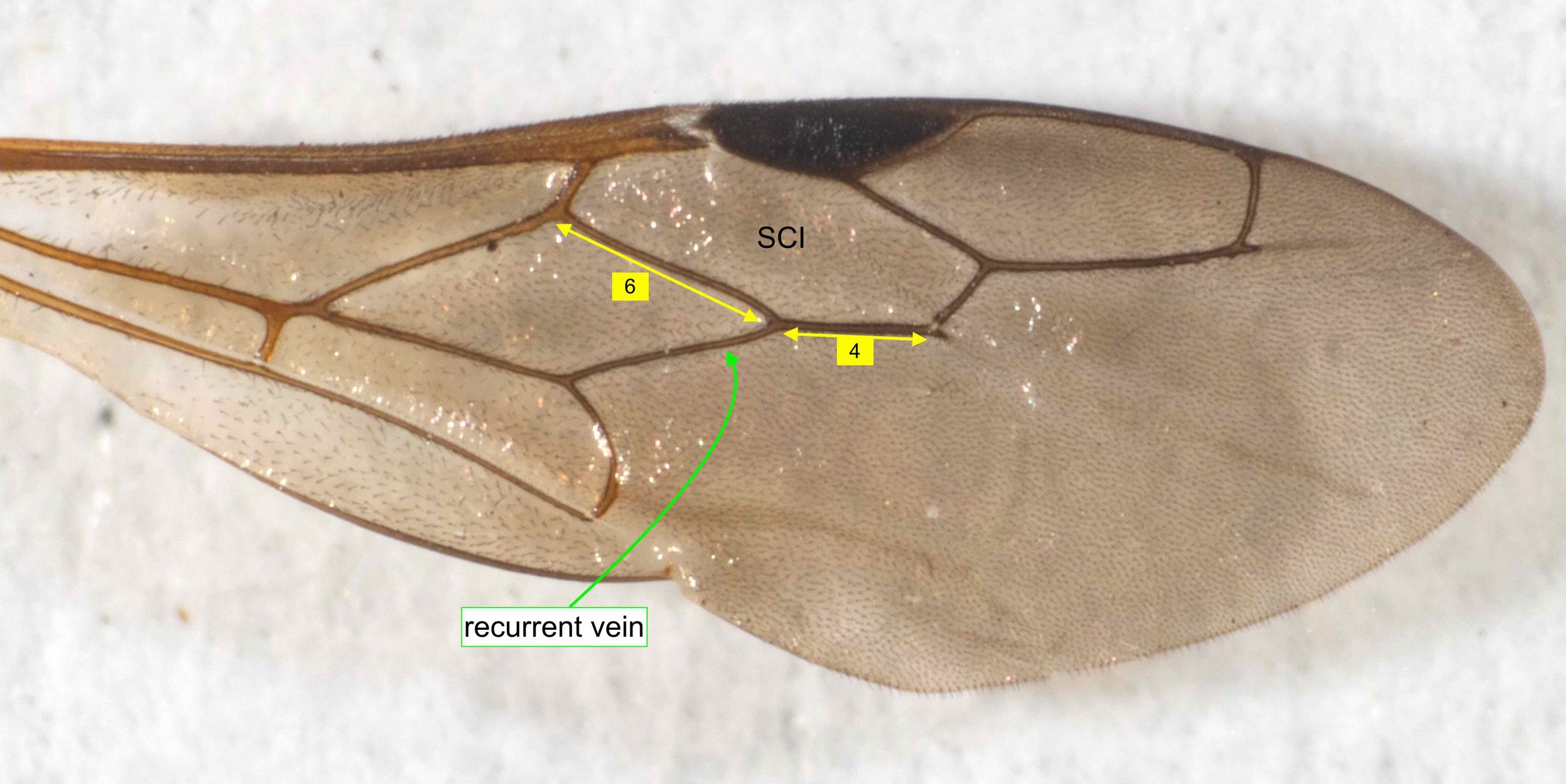
forewing venation
Pseudoturneria have:
- junction of recurrent vein & submarginal cell (SCI) slightly beyond middle; ratio of basal segments of SCI close to 5:4 (in contrast to Podagritus which are always about 5:2 in Australian species)
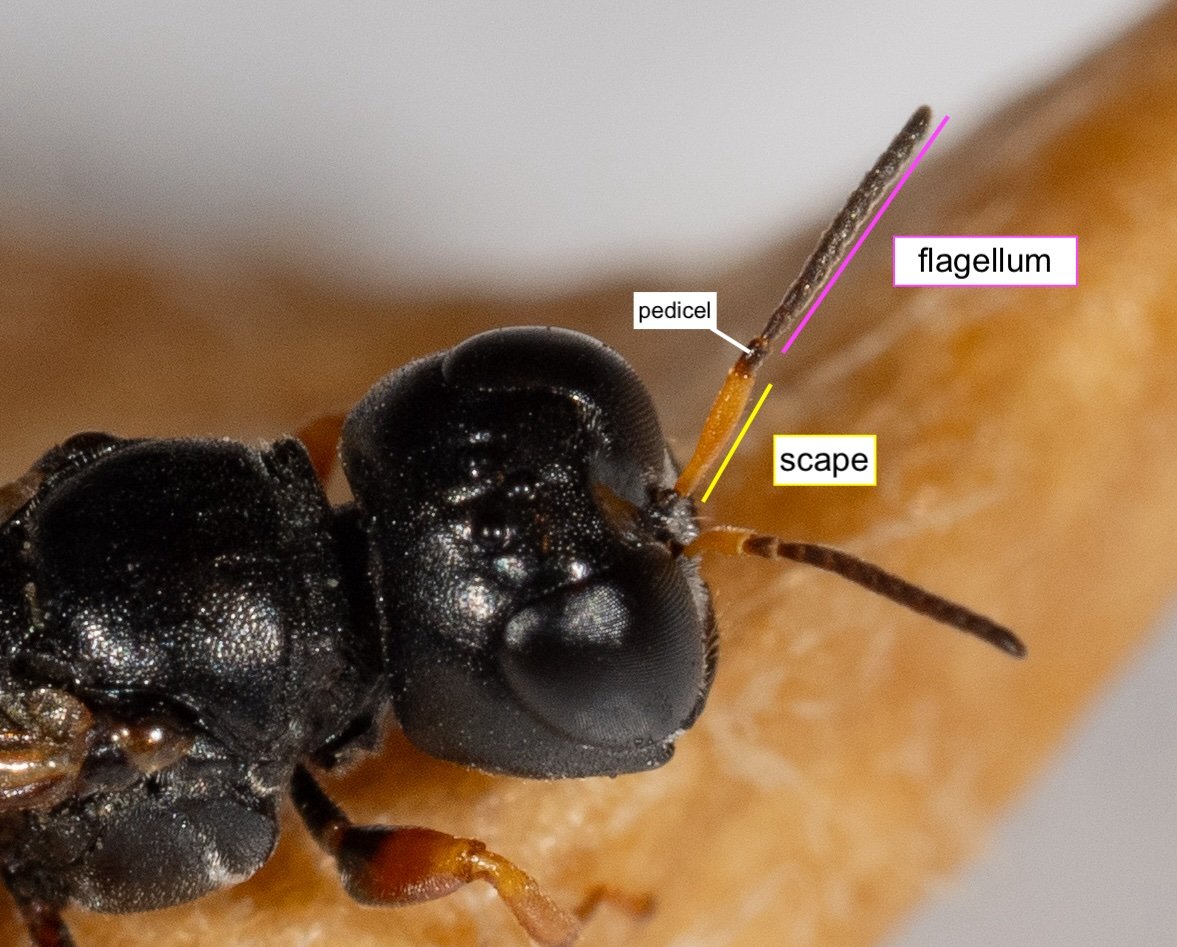
antennal structure
CRABRONINI have:
- scape relatively long … about half the length of the flagellum


overall body shape
Pseudoturneria:
- are small in size, ranging from 4-6.5mm head-body length
- have a stocky appearance with a subsessile gaster (in contrast to all Australian Podagritus, which have an elongate form and pedunculate gaster)
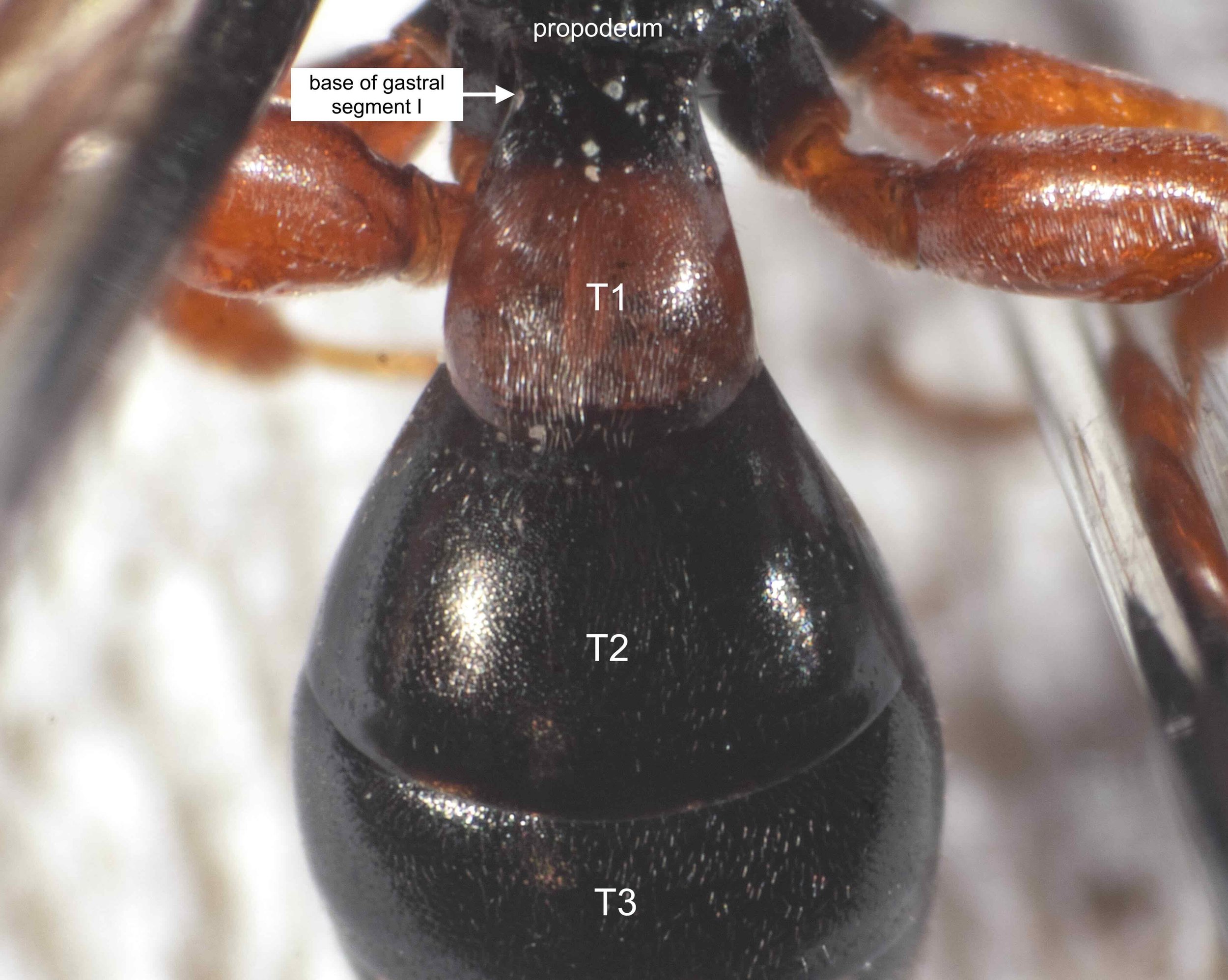
gaster shape
Pseudoturneria have:
- segment I much narrower that segment II
- segment I short, only slightly longer than wide
- gaster widest at segment II or III
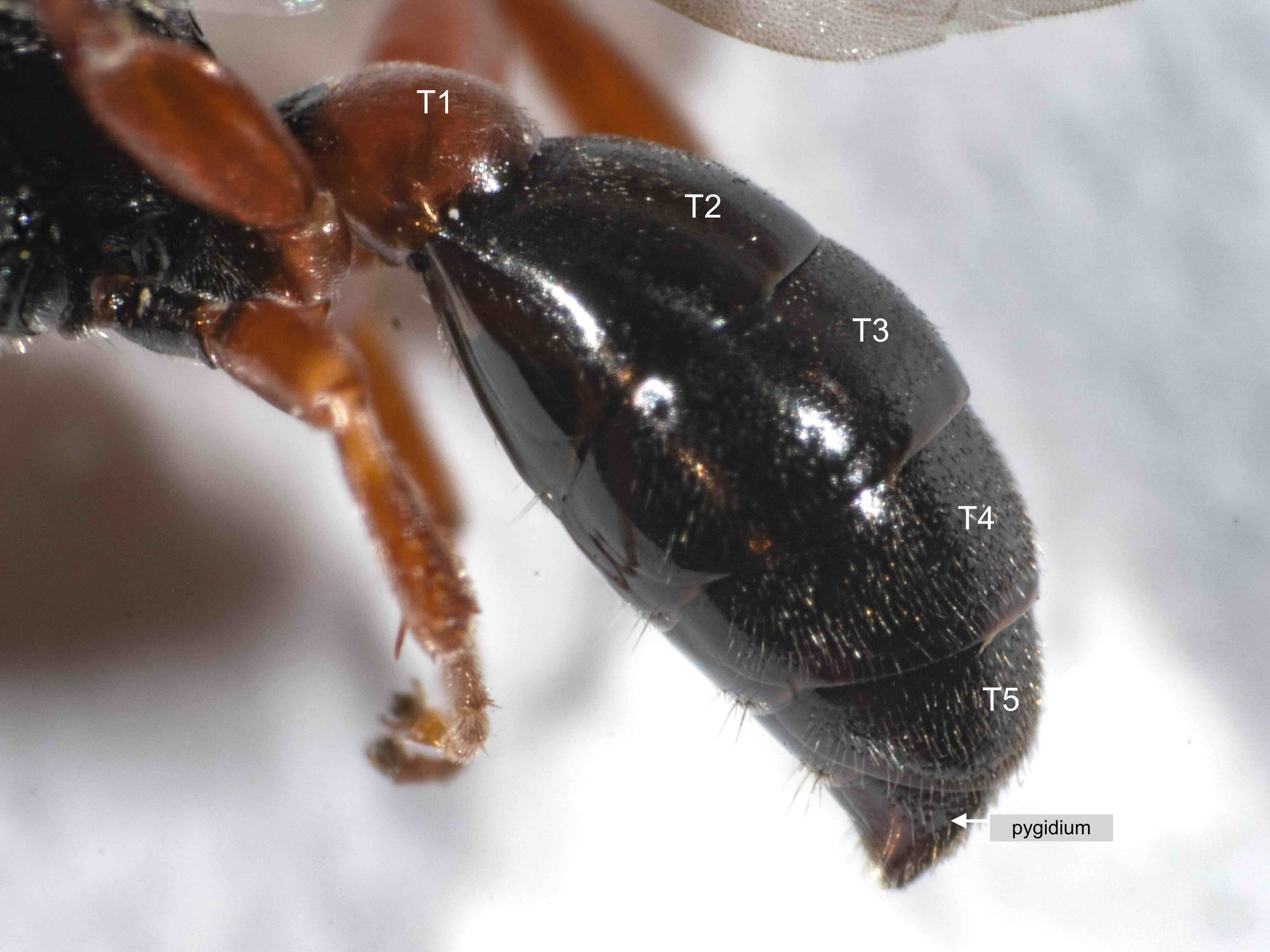
gaster shape
Pseudoturneria have:
- gaster subsessile due to a very clear constriction between segments I & II
- segment I thick & relatively short
- segment I without dorsoposterior spine (in contrast to this diagnostic feature of Notocrabro)
- segments II-V regular, ovoid
- gaster widest at segment III
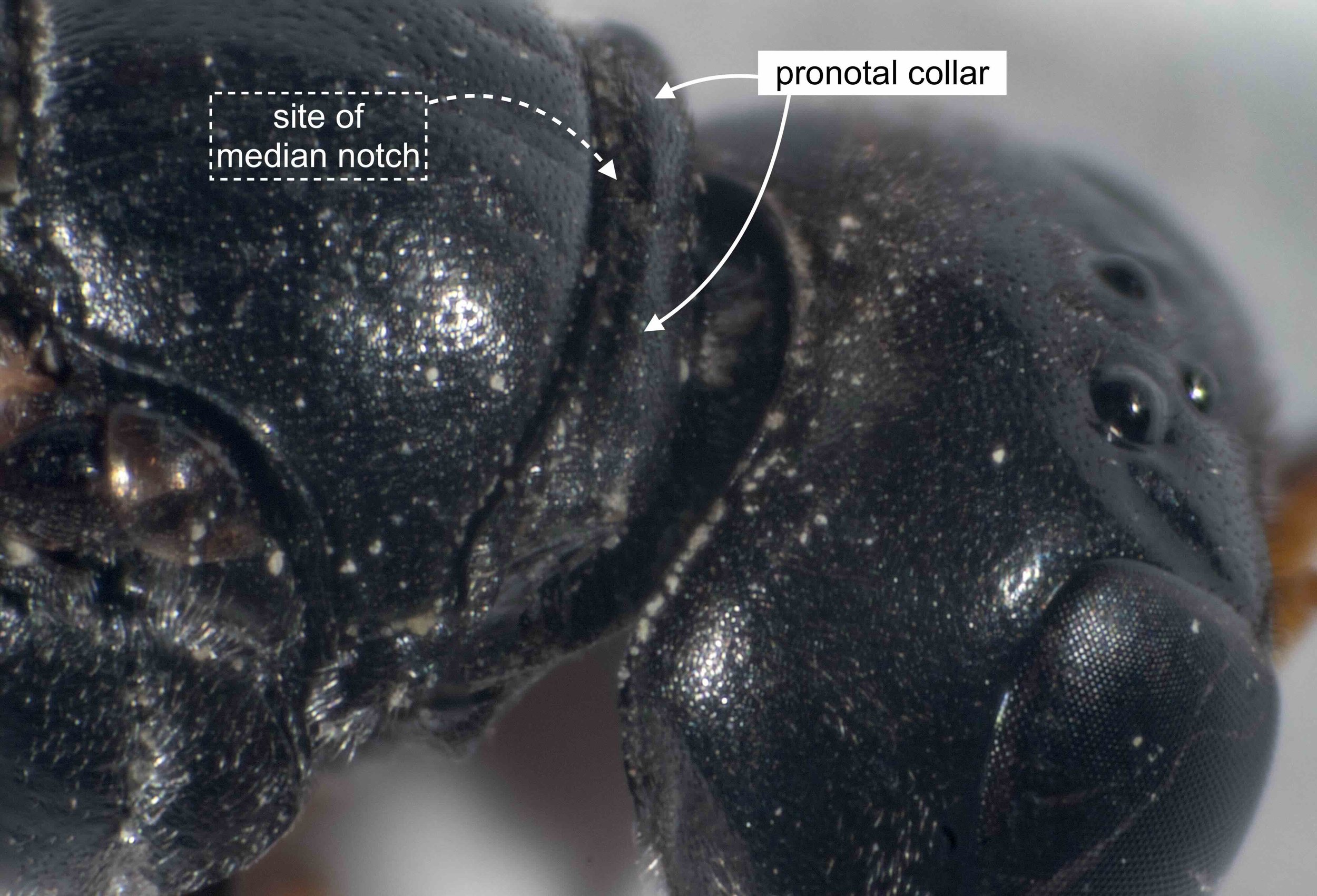
shape of pronotal collar
Pseudoturneria have:
- pronotal collar rounded, without a carina
- median notch of collar indistinct or minimal
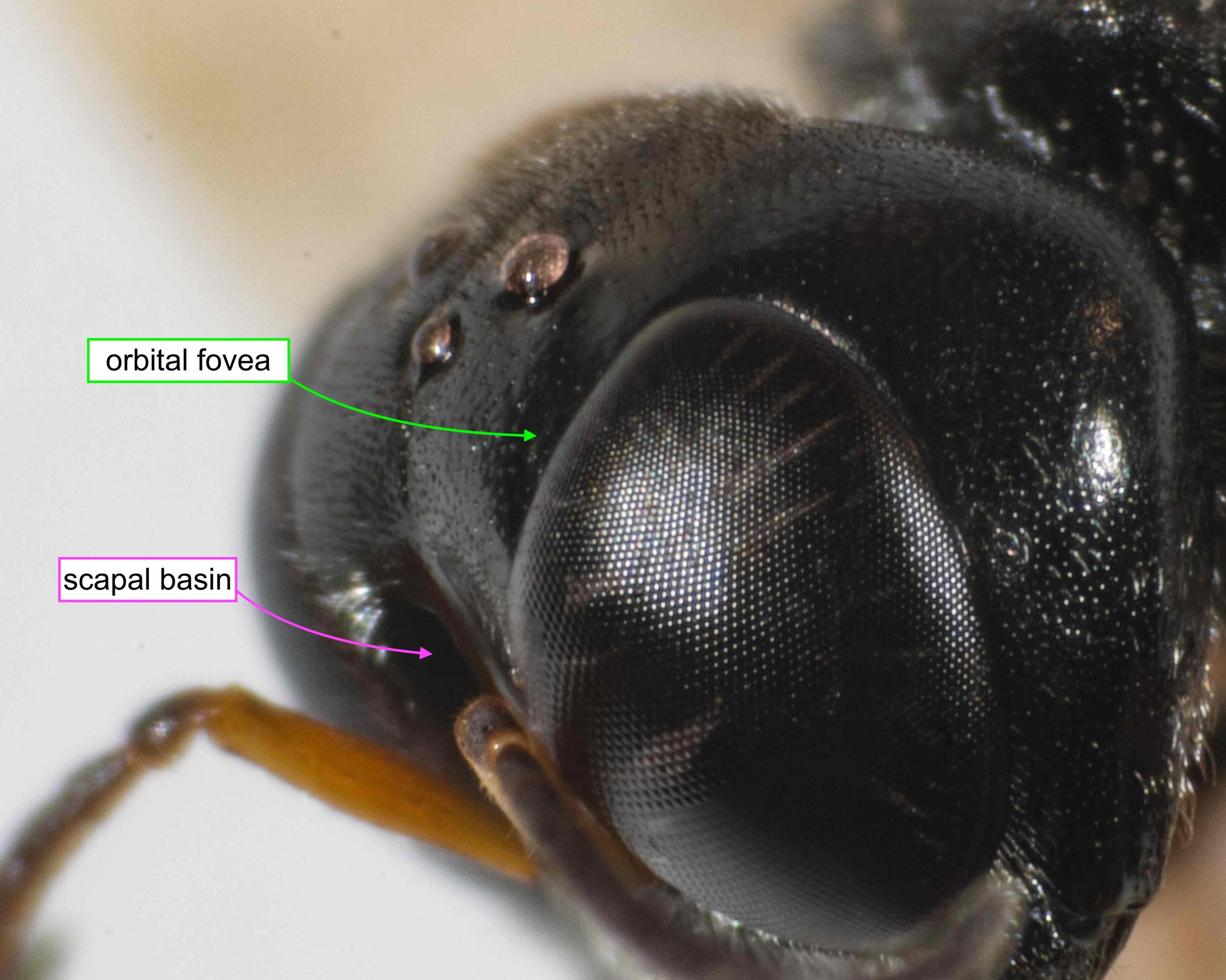
head features
Pseudoturneria have:
- indistinct orbital fovea
- scapal basin simple, without dorsal carina
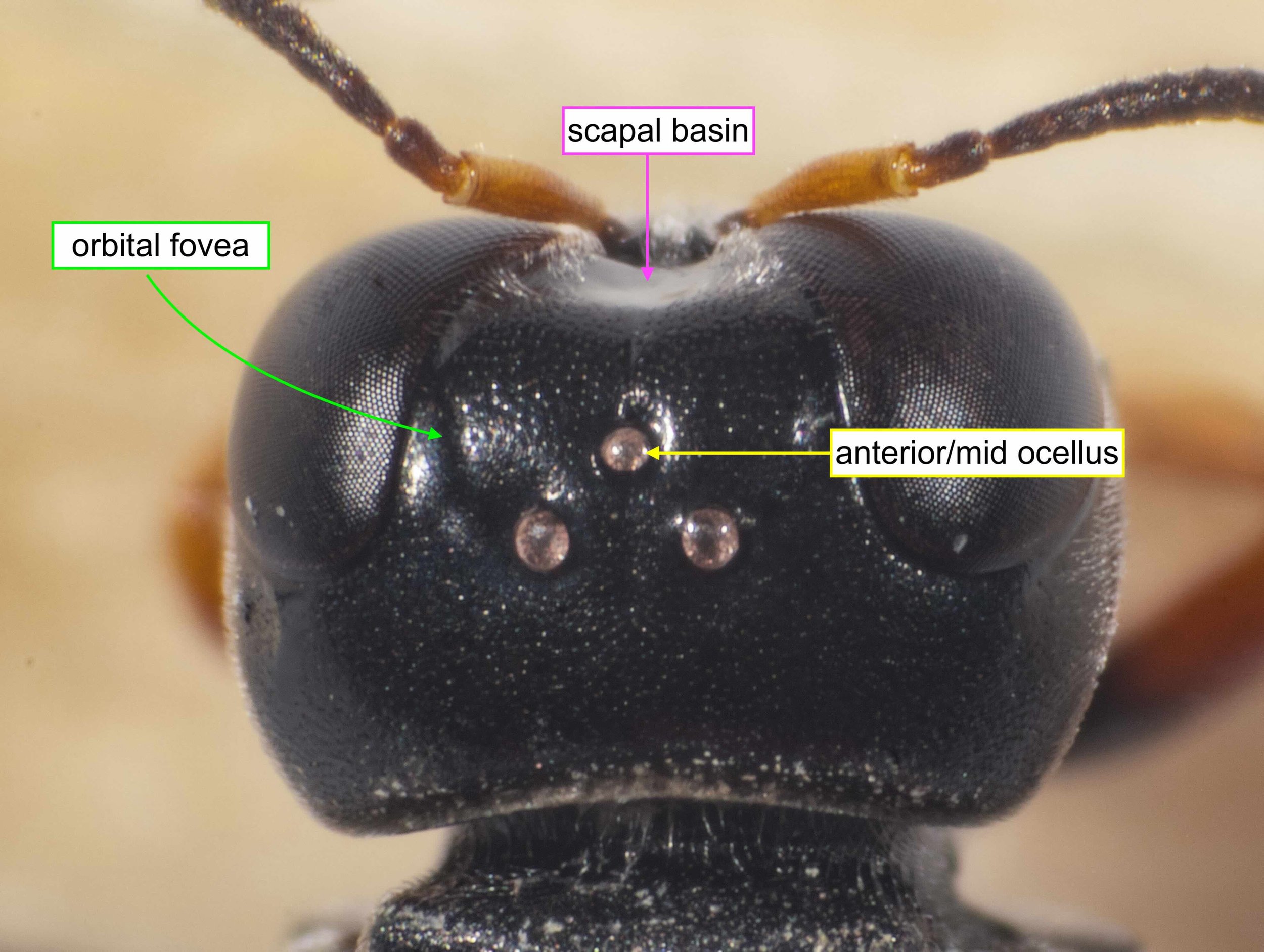
head features
Pseudoturneria have:
- indistinct orbital fovea
- scapal basin simple, without dorsal carina
- ocelli in a moderately high triangle, only slightly broader than long
- the anterior ocellus smaller than hind/lateral ocelli
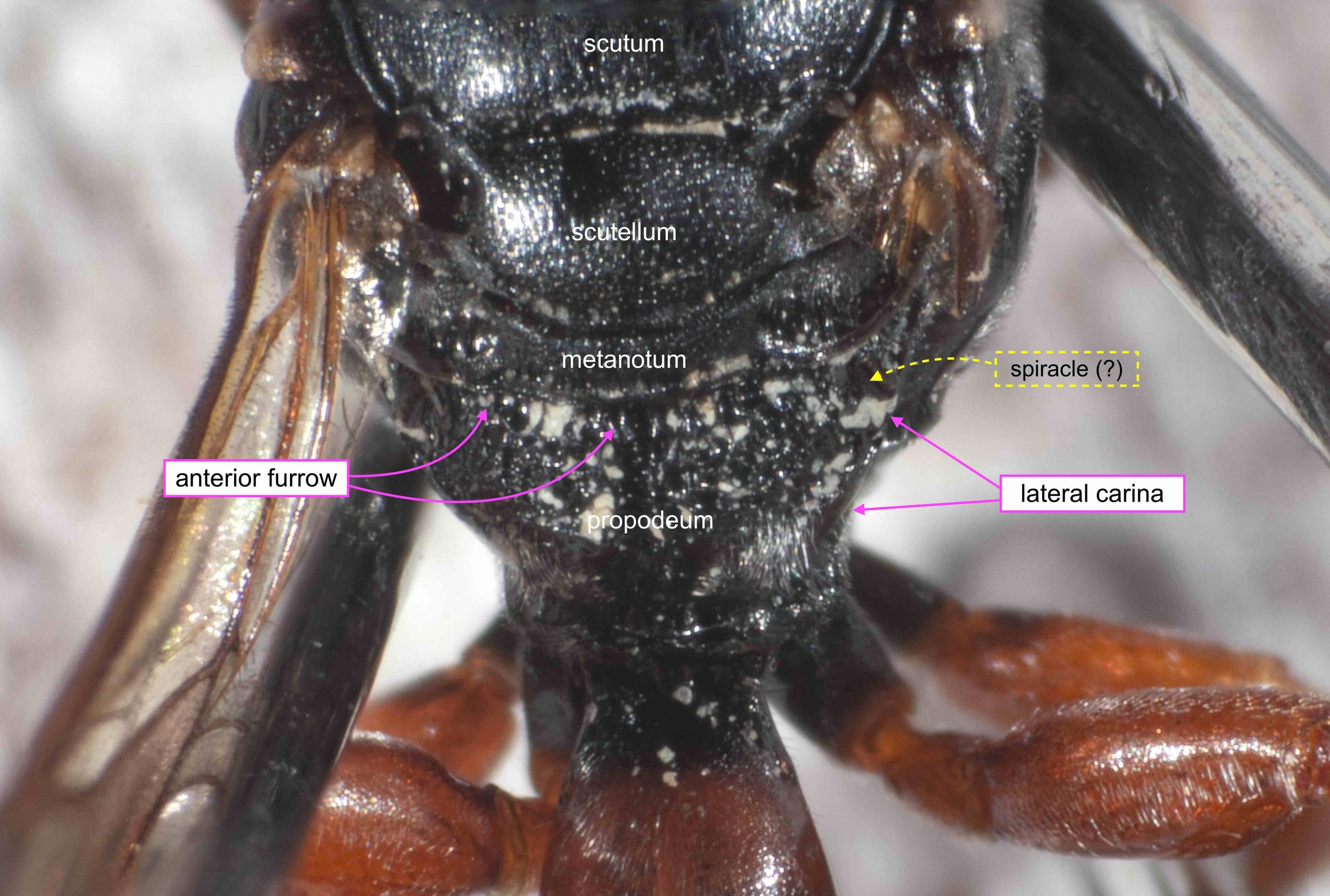
propodeum sculpturing
Pseudoturneria have:
- anterior furrow wide, deep, & strongly crenulate
- dorsal surface coarsely sculpted (in contrast to Notocrabro which has fine sculpturing)
- dorsal surface separated from sides by lateral carina, extending from the spiracle
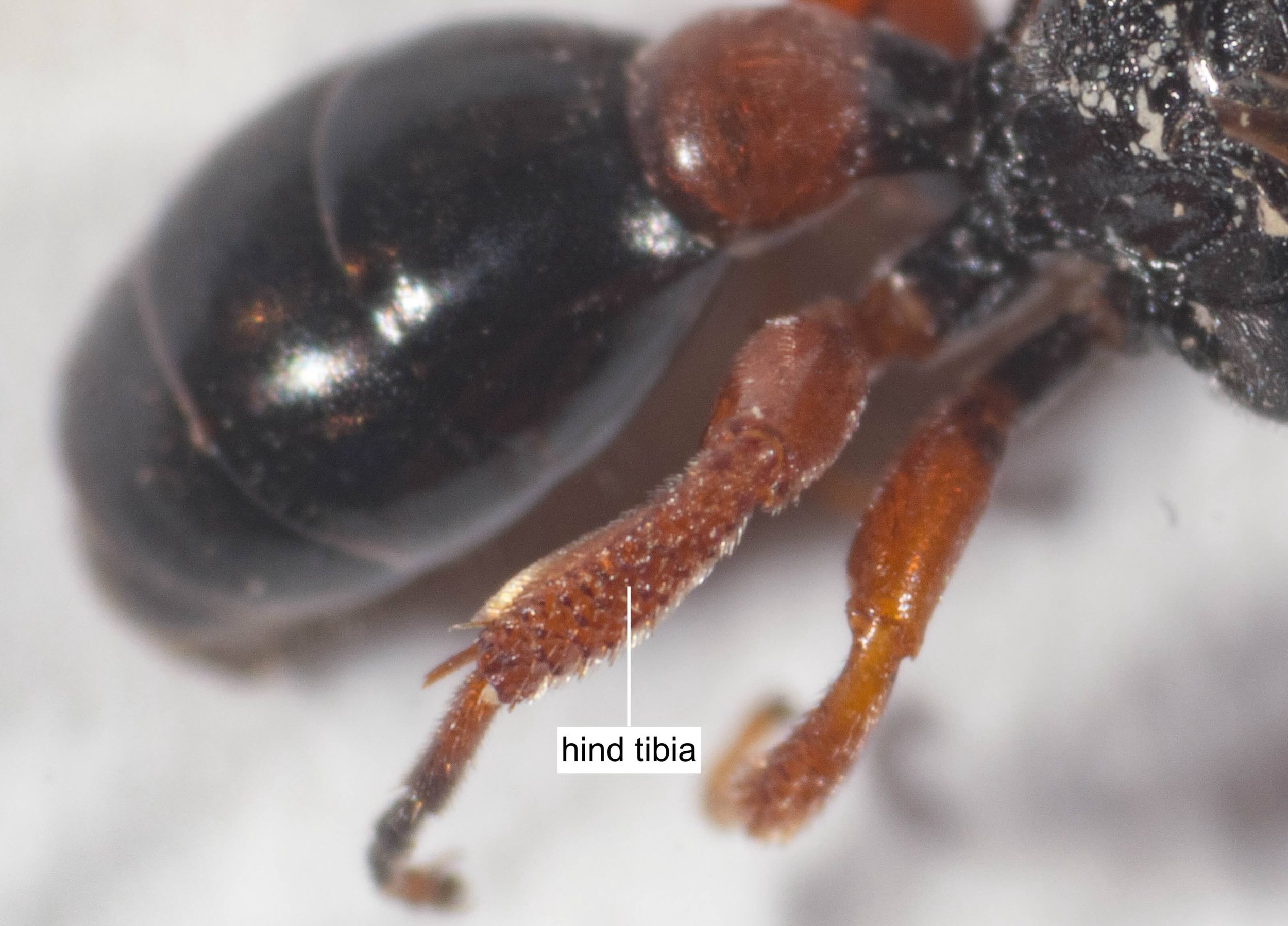
hind tibia
Pseudoturneria have:
- hind tibia of regular thickness, not clavate or otherwise strongly swollen (in contrast to Notocrabro, Podagritus and most Rhopalum)
- in females, the hind tibia is strongly spinose
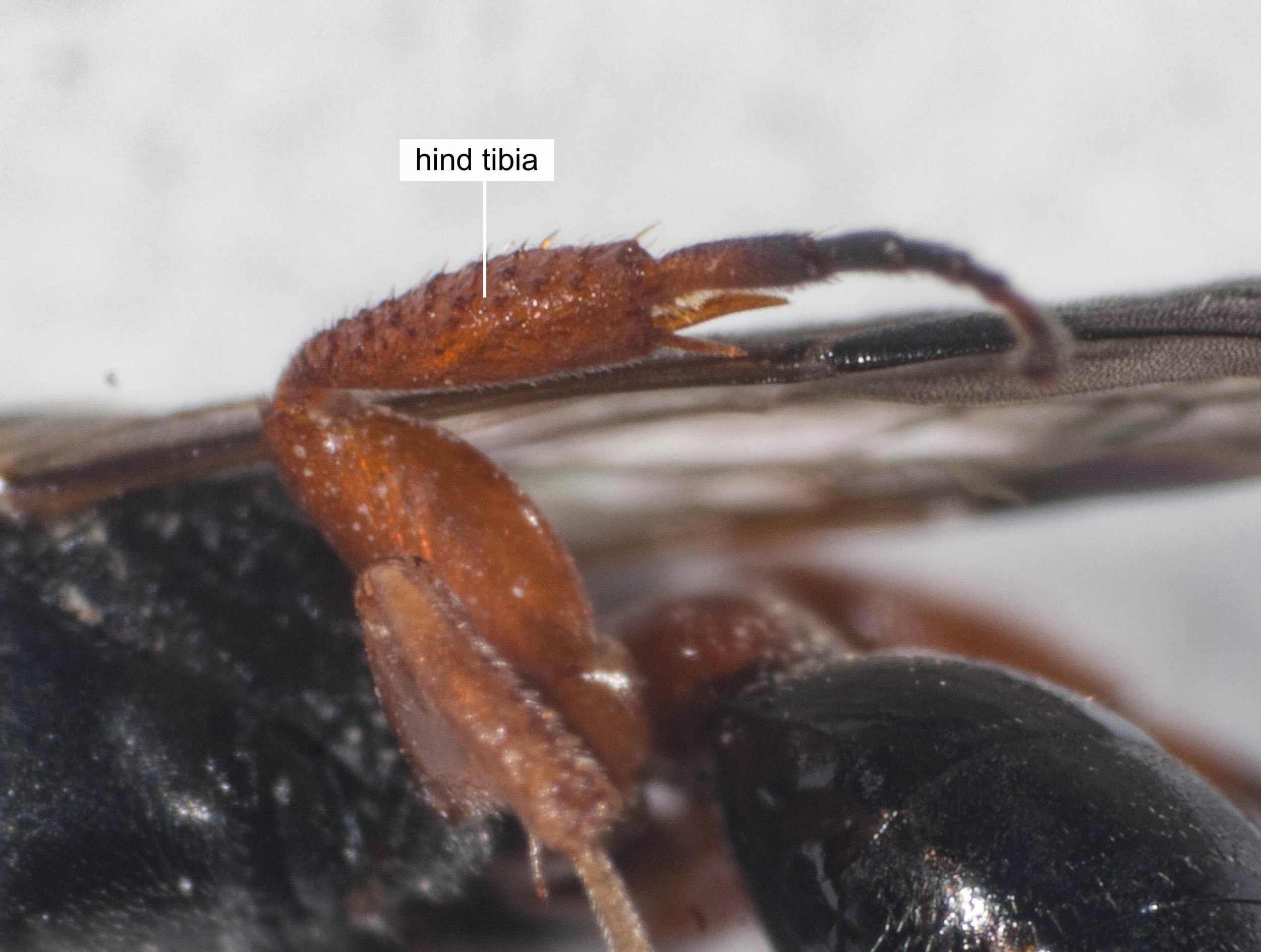
hind tibia
Pseudoturneria have:
- hind tibia of regular thickness, not clavate or otherwise strongly swollen (in contrast to Notocrabro, Podagritus and most Rhopalum)
- in females, the hind tibia is strongly spinose
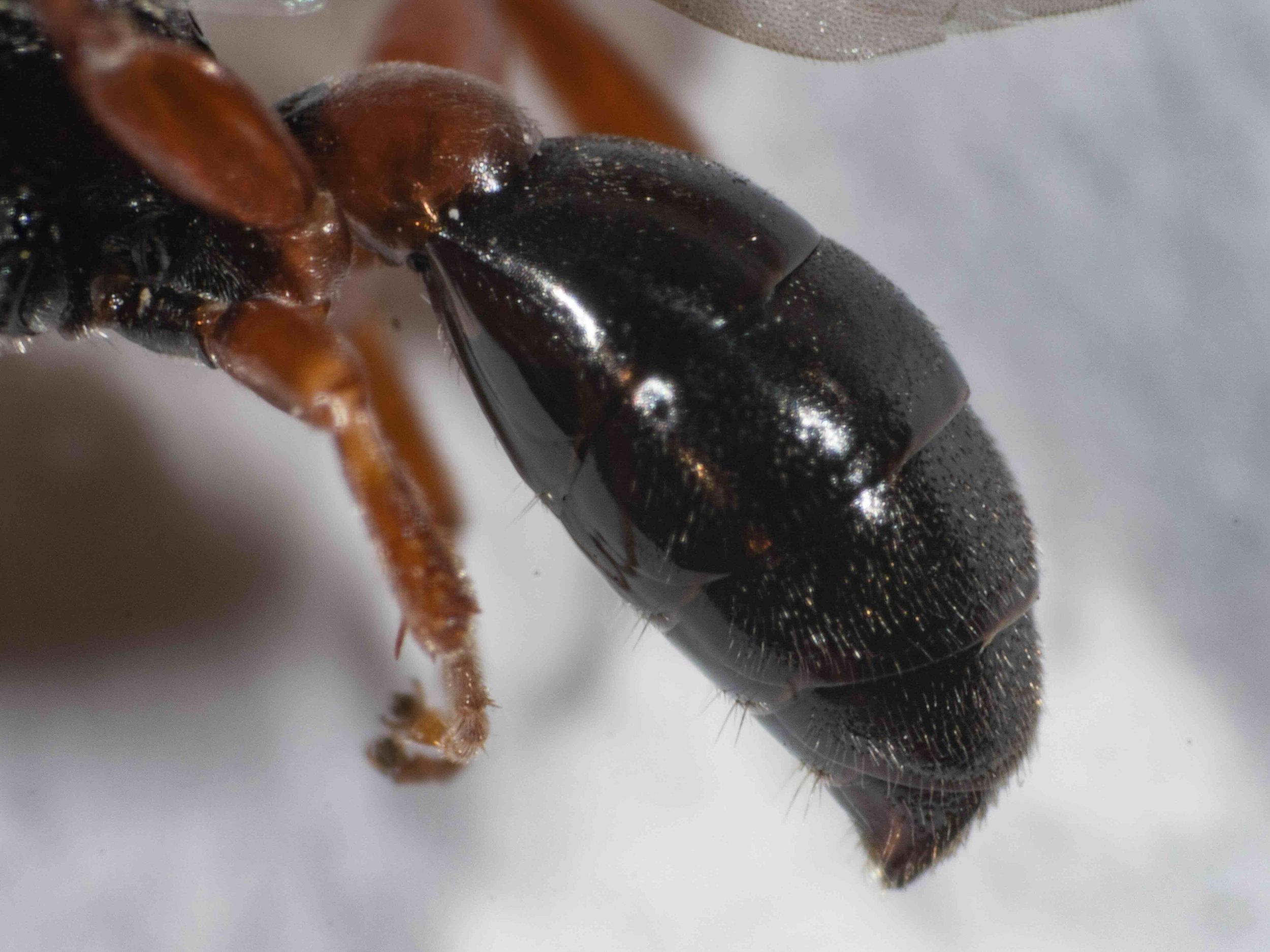
gaster colour
P. territorialis have:
- gaster deep black, except for first segment
(This colouration is diagnostic for the species)
Note:Leclercq (1998) two males showing an unusual variation: the sternites tended to be more orange, while the first segment could be extensively black.
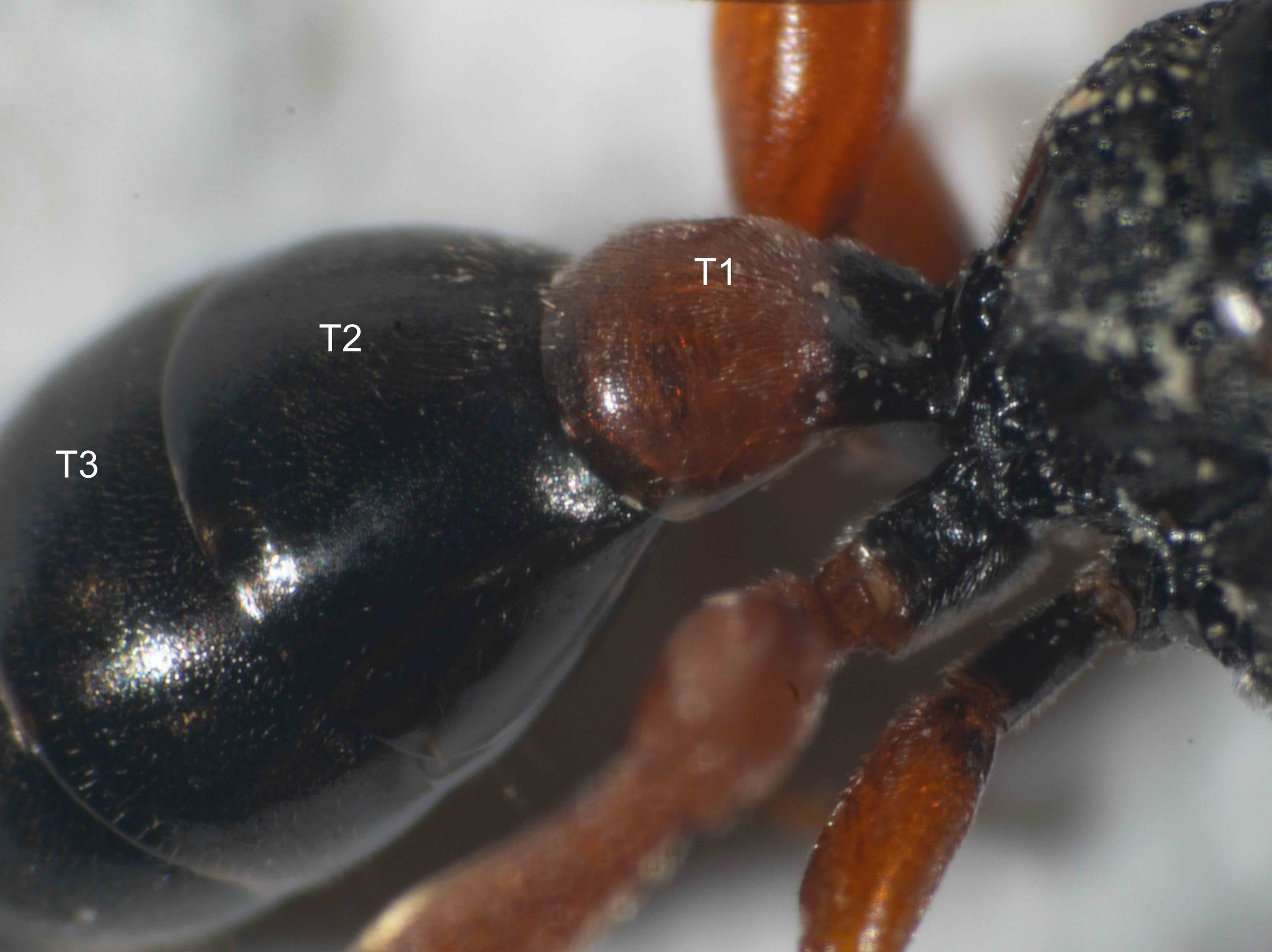
colour of T1
P. territorialis have:
- tergite 1 orange, contrasting with the black of the following segments
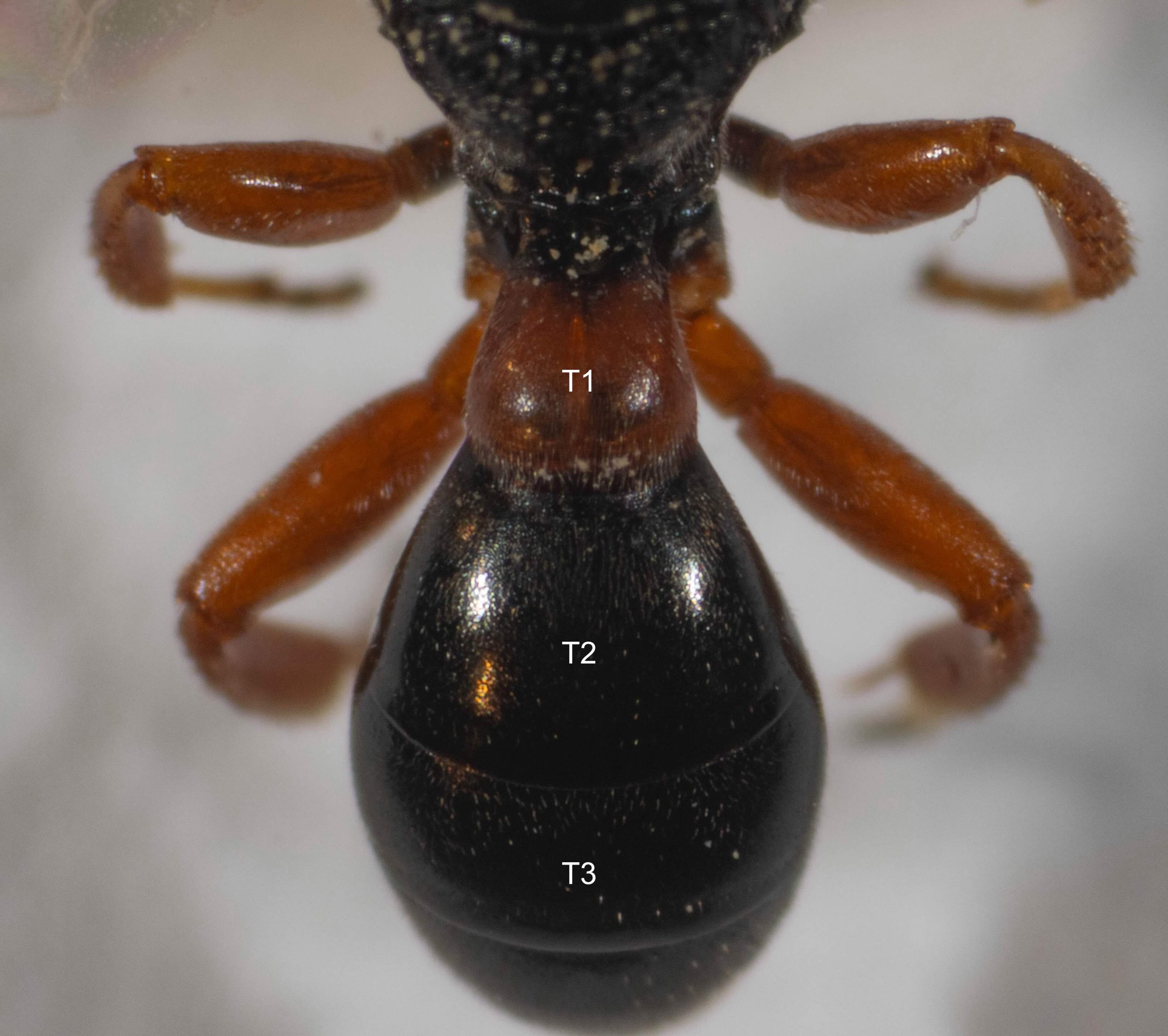
colour of T1
P. territorialis have:
- tergite 1 orange, contrasting with the black of the following segments
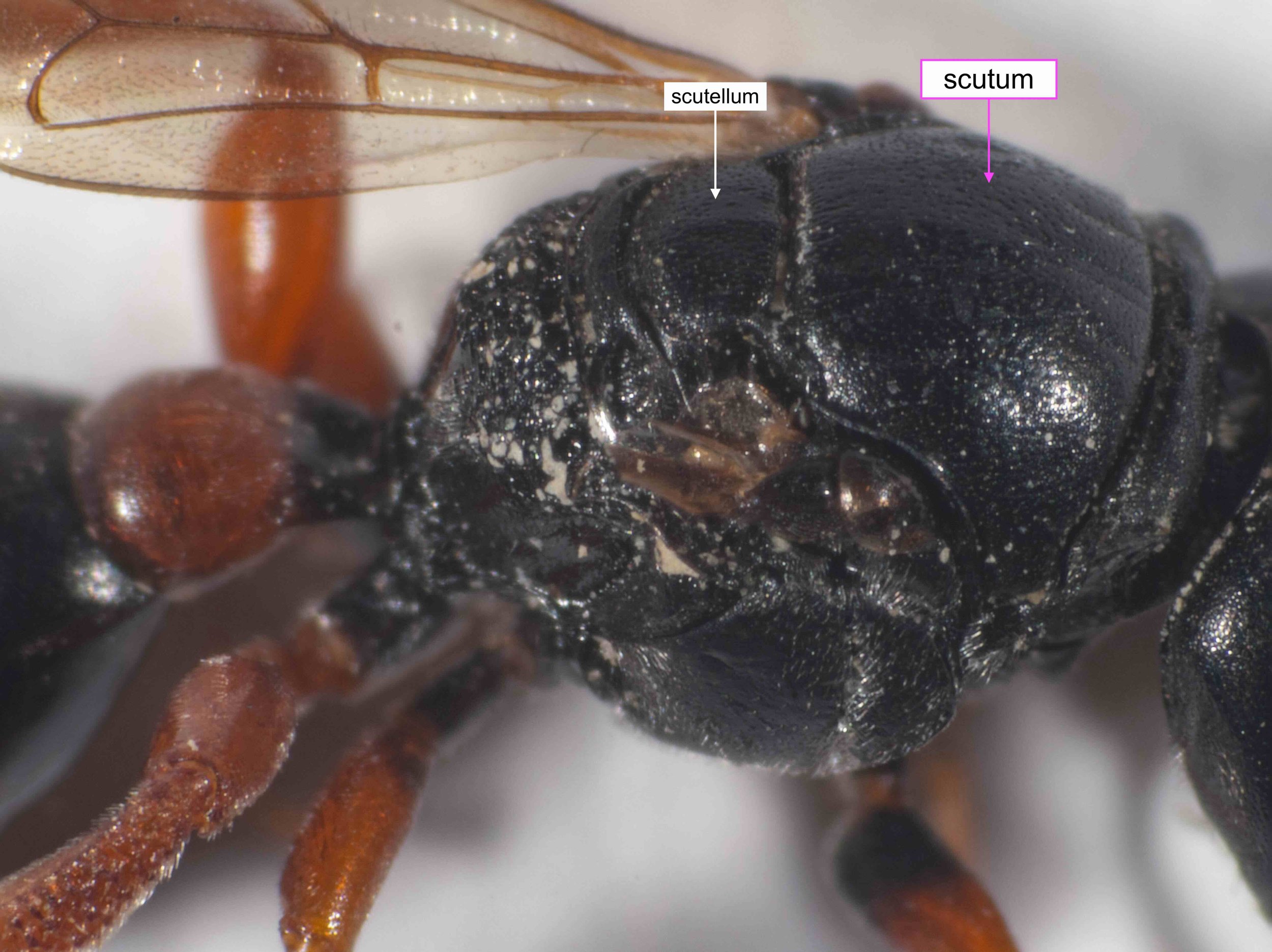
scutum texture
P. territorialis have:
- scutum with regular punctures throughout, without large intervals
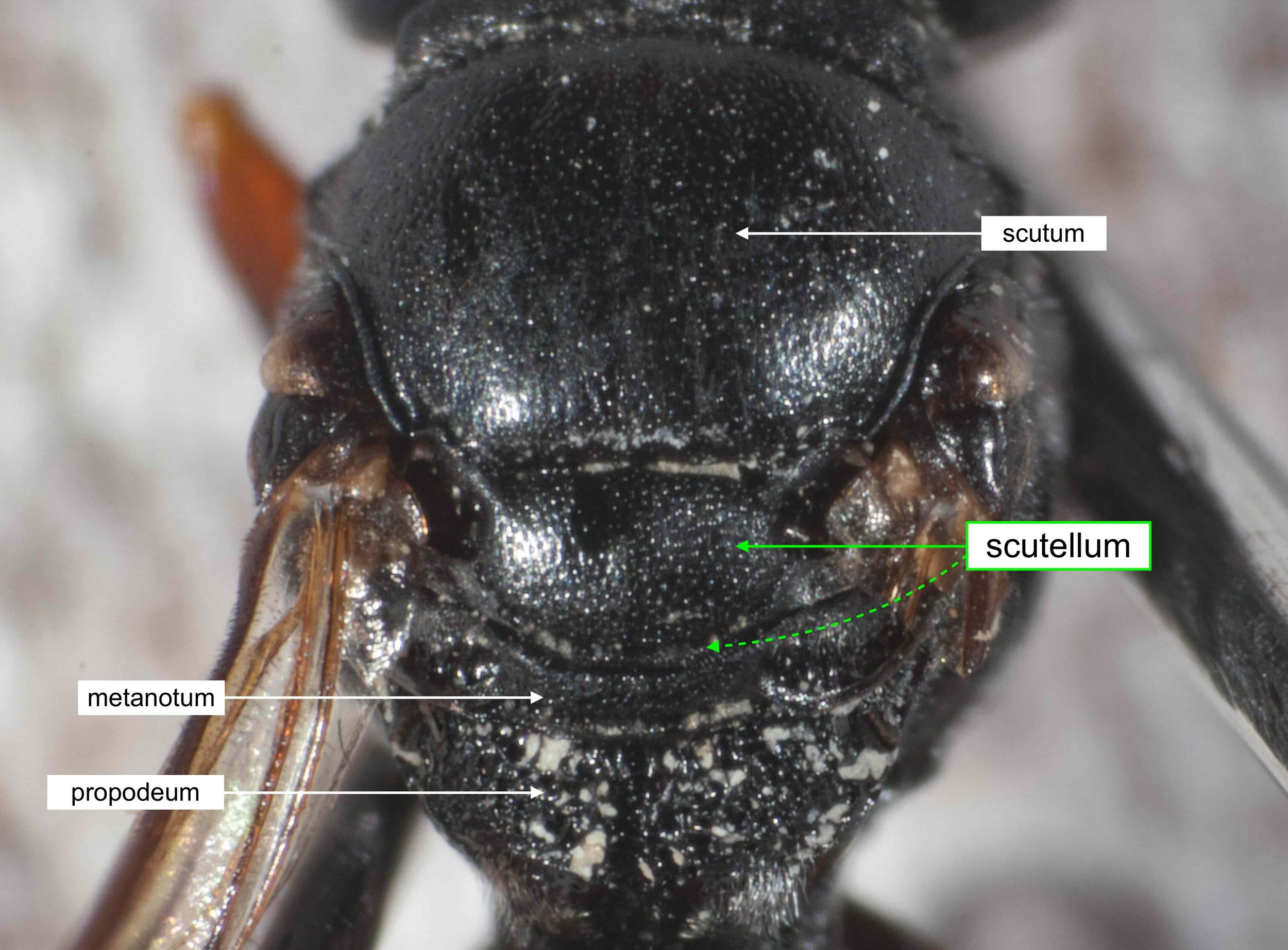
scutellum details
P. territorialis have:
- scutellum not shiny
- posterior edge crenulate
(Note that Leclercq contrasts P. wubina & P. territorialis on this feature, describing the former as having the ‘posterior edge depressed & visibly crenulate’, in contrast to ‘not or barely crenulate’ in P. territorialis. hhhmmm …. this looks clearly crenulate to my eyes)
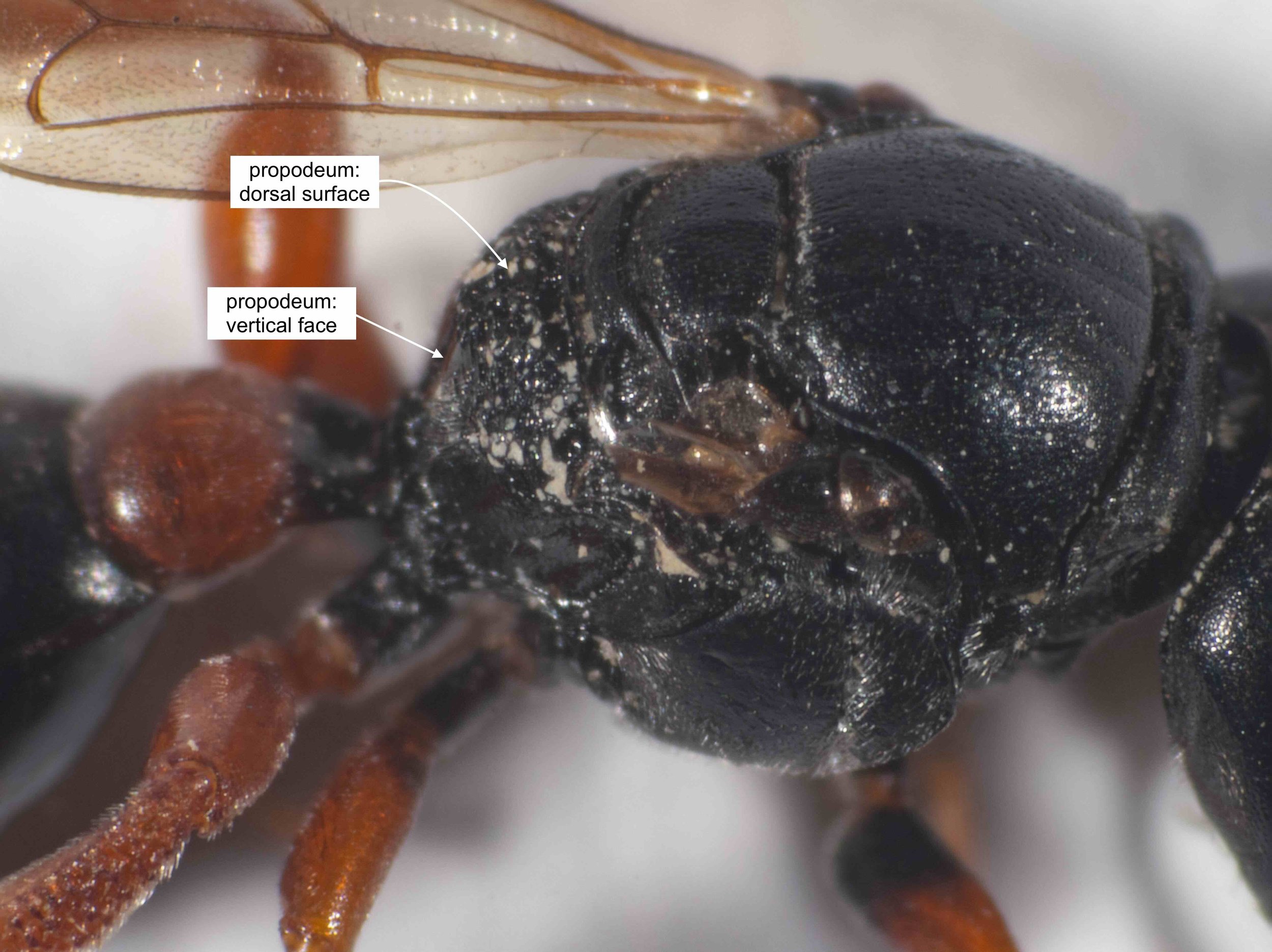
propodeum texture
P. territorialis have:
- propodeal enclosure entirely reticulate-areolar
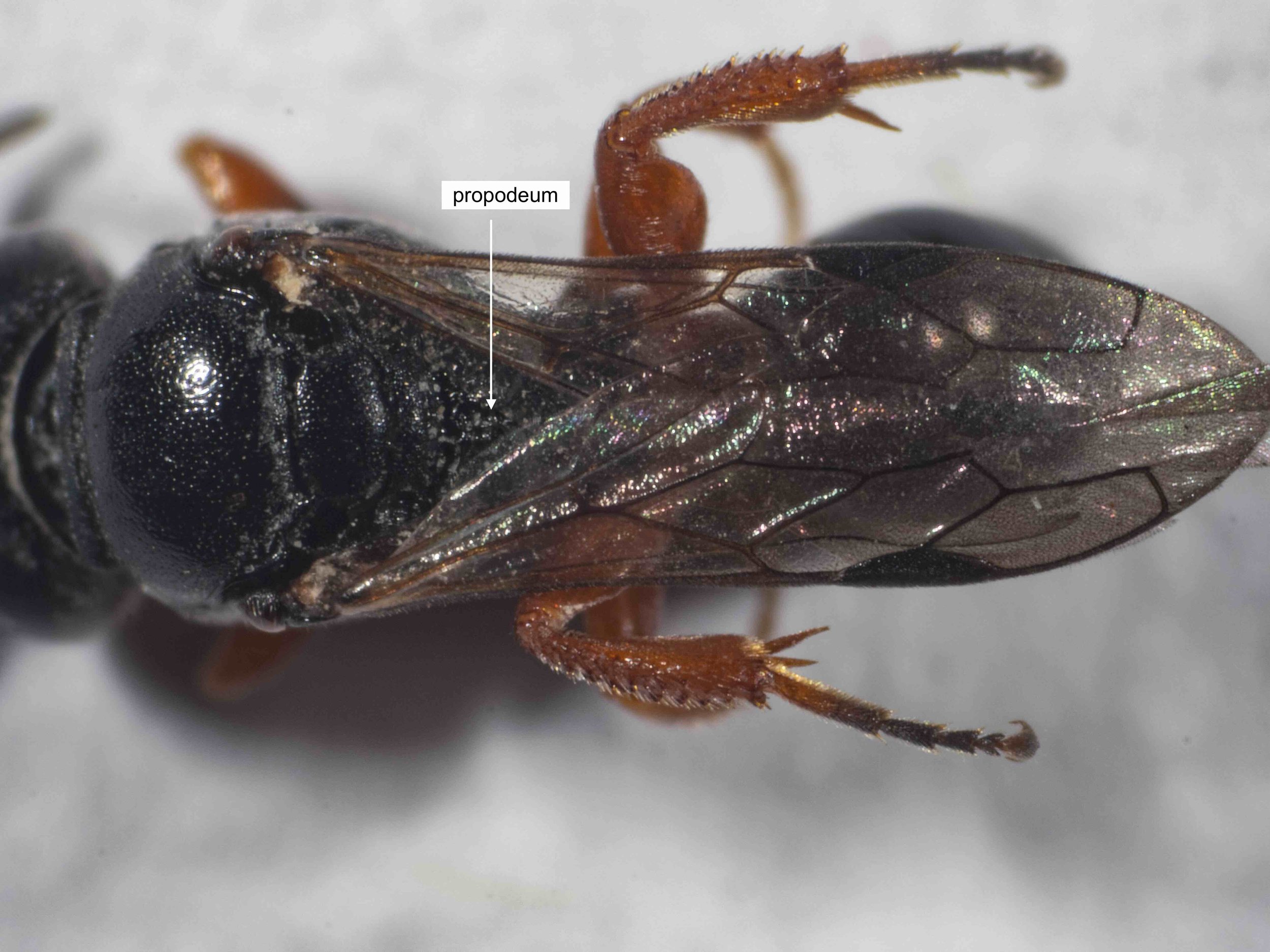
propodeum texture
P. territorialis have:
- propodeal enclosure entirely reticulate-areolar
(Note that even with the wings intact & closed, much of the dorsal surface of the propodeum is visible … making this a potentially useful character to check in field photos)
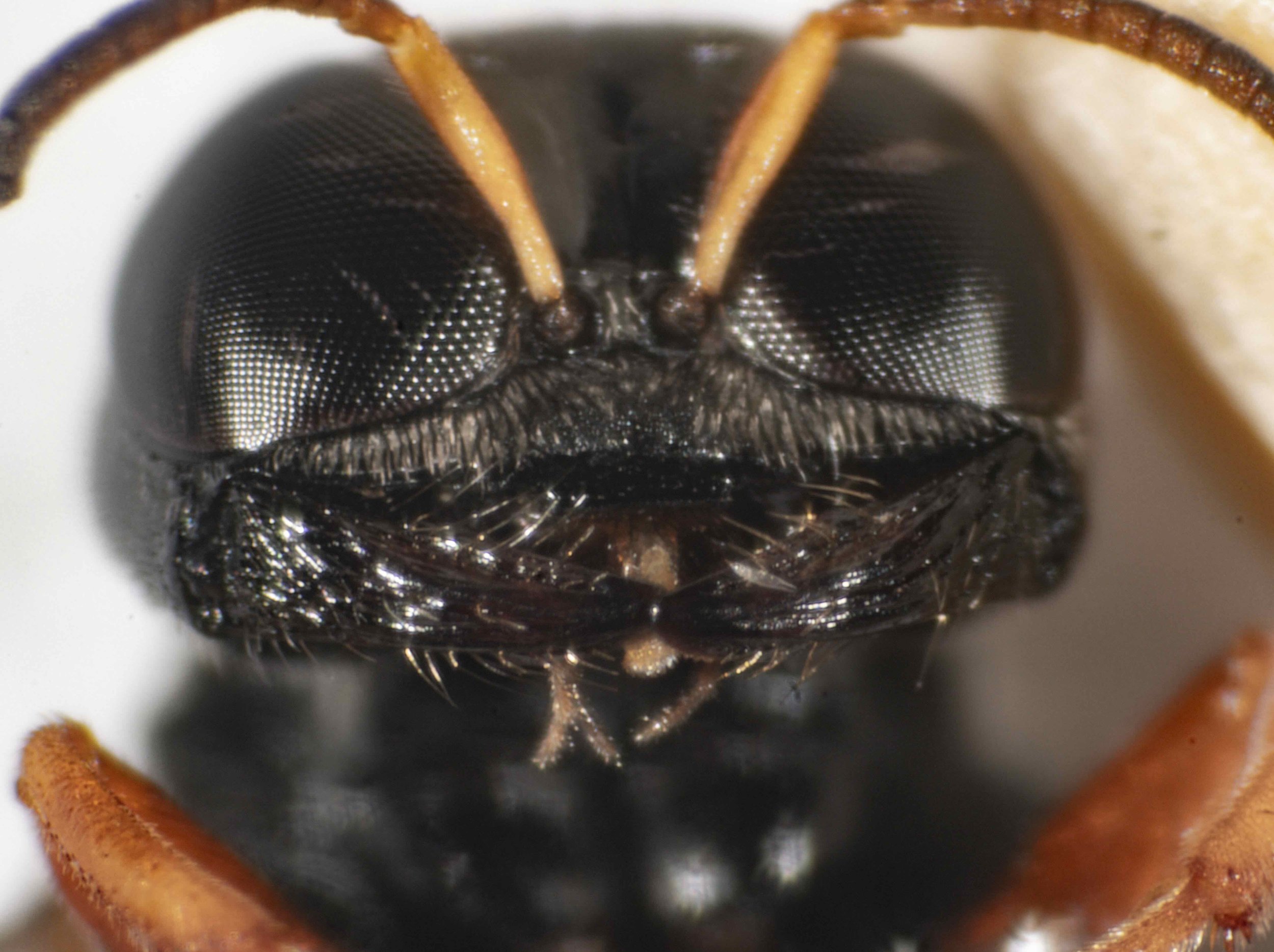
mandible shape
P. territorialis have:
- mandibles unidentate, tips broadly rounded
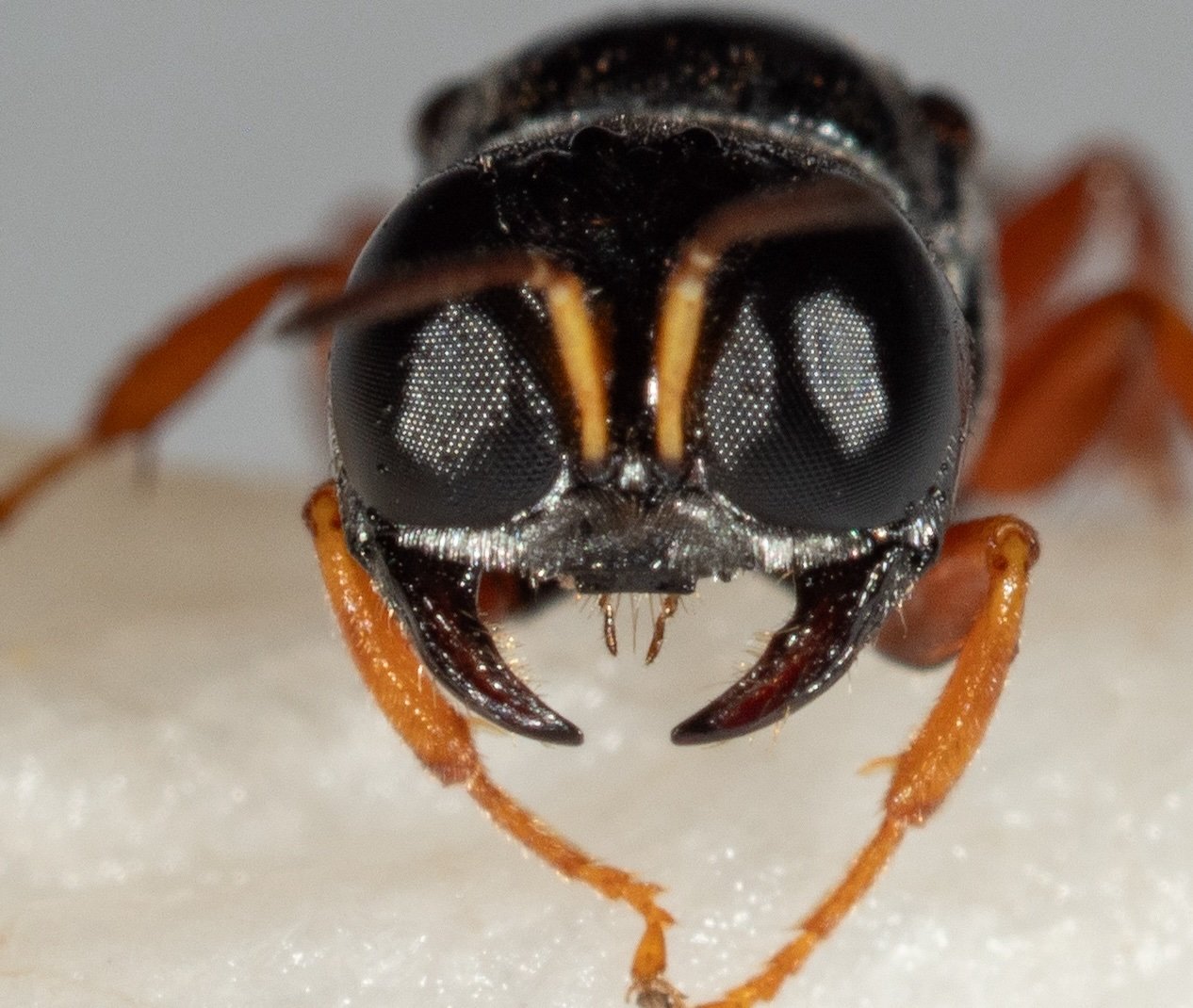
face view
The head on view is valuable for many characters, including the inner surface of the mandible (which in some genera has a distinctive shape). However, it is effectively a dorsal view of the mandible, and conceals the shape of the tip.
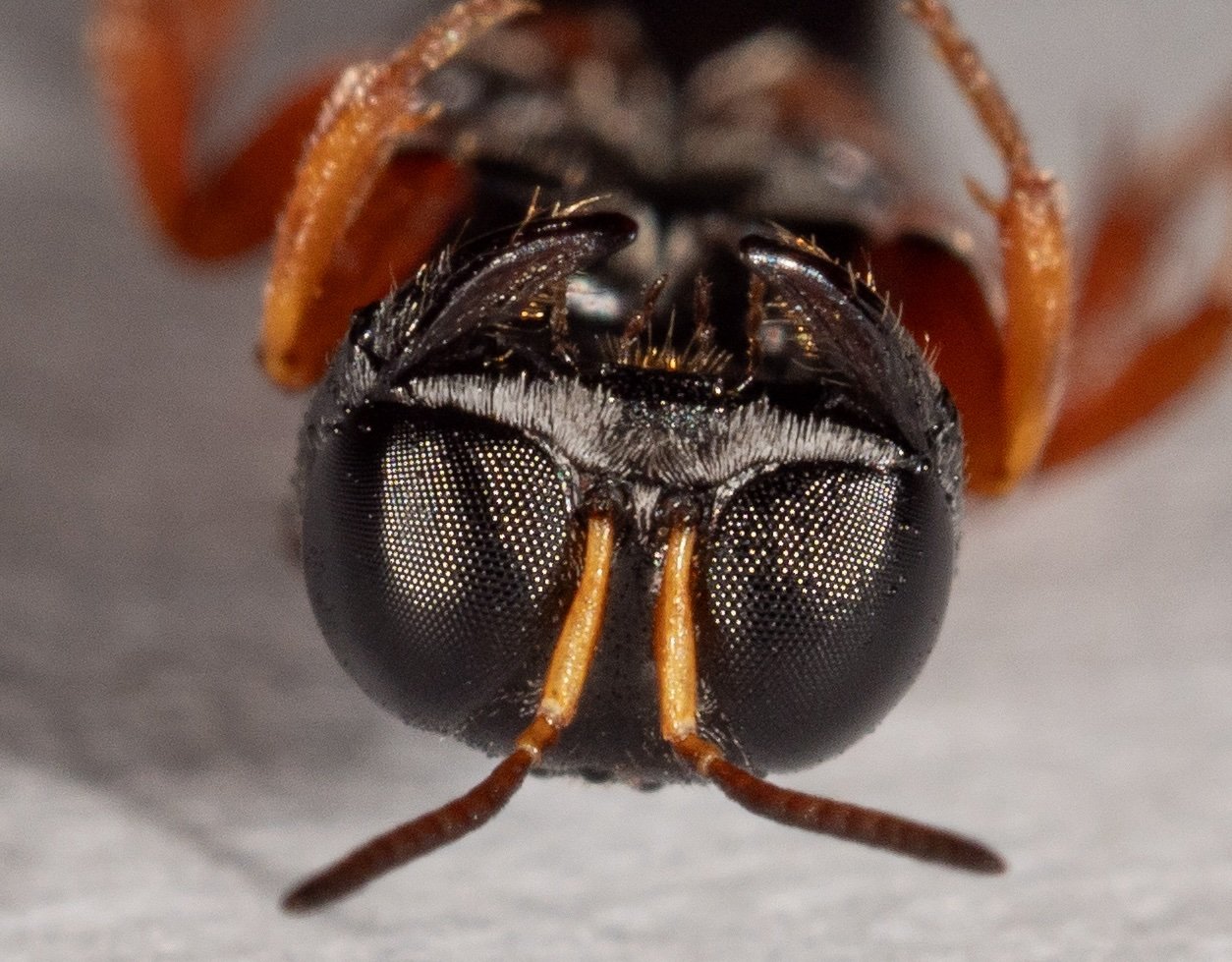
slightly ventral view of head
From a slightly more ventral perspective, the shape of the tip is clearer. However, the precise shape of the lower edge is still obscured … as would any small teeth be.
(Note: she was alive here, just a bit cool after a brief stint in the refrigerator)
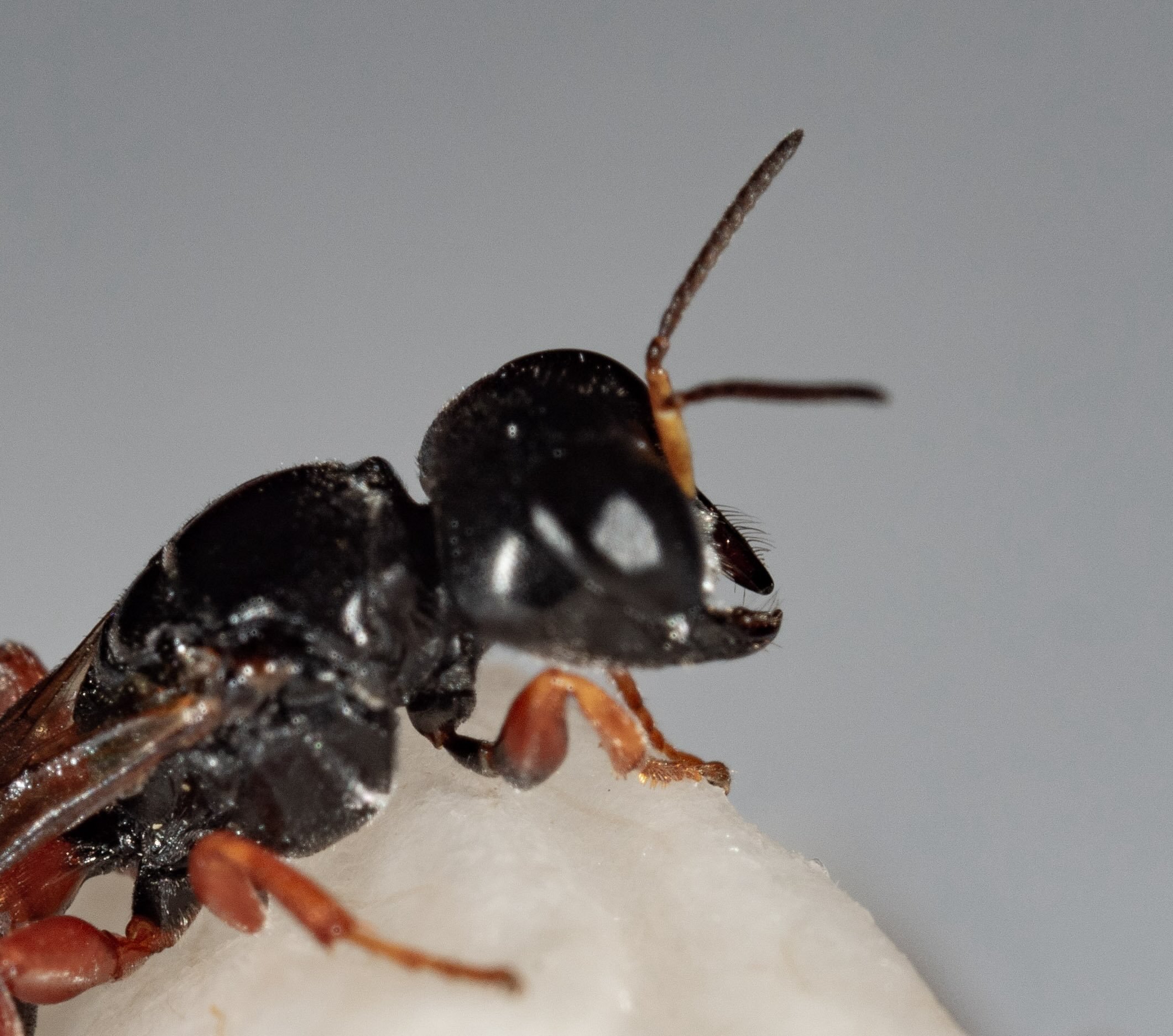
lucky lateral shot
In the field, shots from this aspect are quite common. And if one is lucky, the mandibles are spread and the background provides contrast. But only if one is lucky.
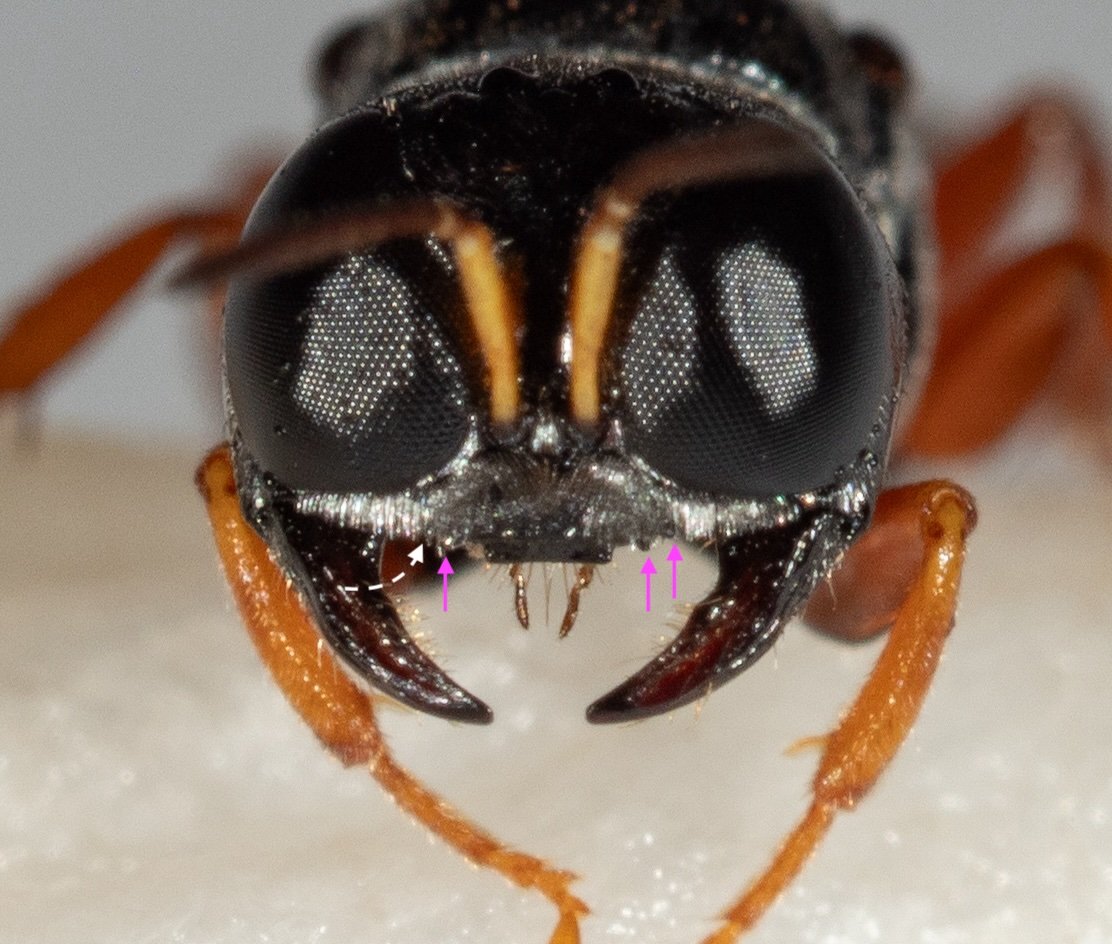
shape of the clypeus
P. territorialis have:
- median lobe truncated anteriorly, glabrous & polished in its terminal third
- a pair of small teeth each side of the median lobe (solid arrows … dashed arrows show position of the fourth tooth, obscured by silvery setae)
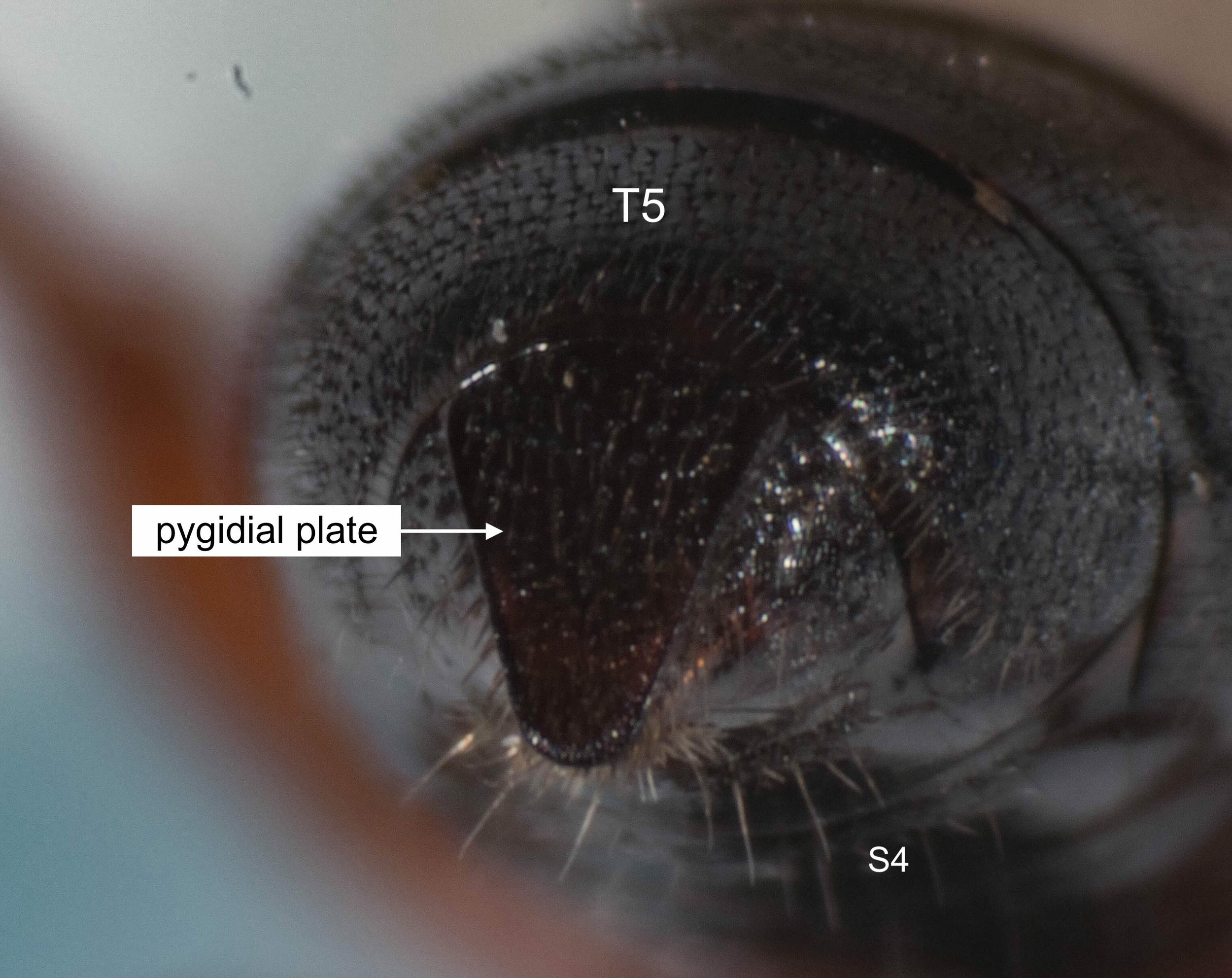
female pygidium
P. territorialis have:
- pygidium distinctly hairy
- pygidial plate relatively broad & punctate throughout (obscured by adpressed hairs)
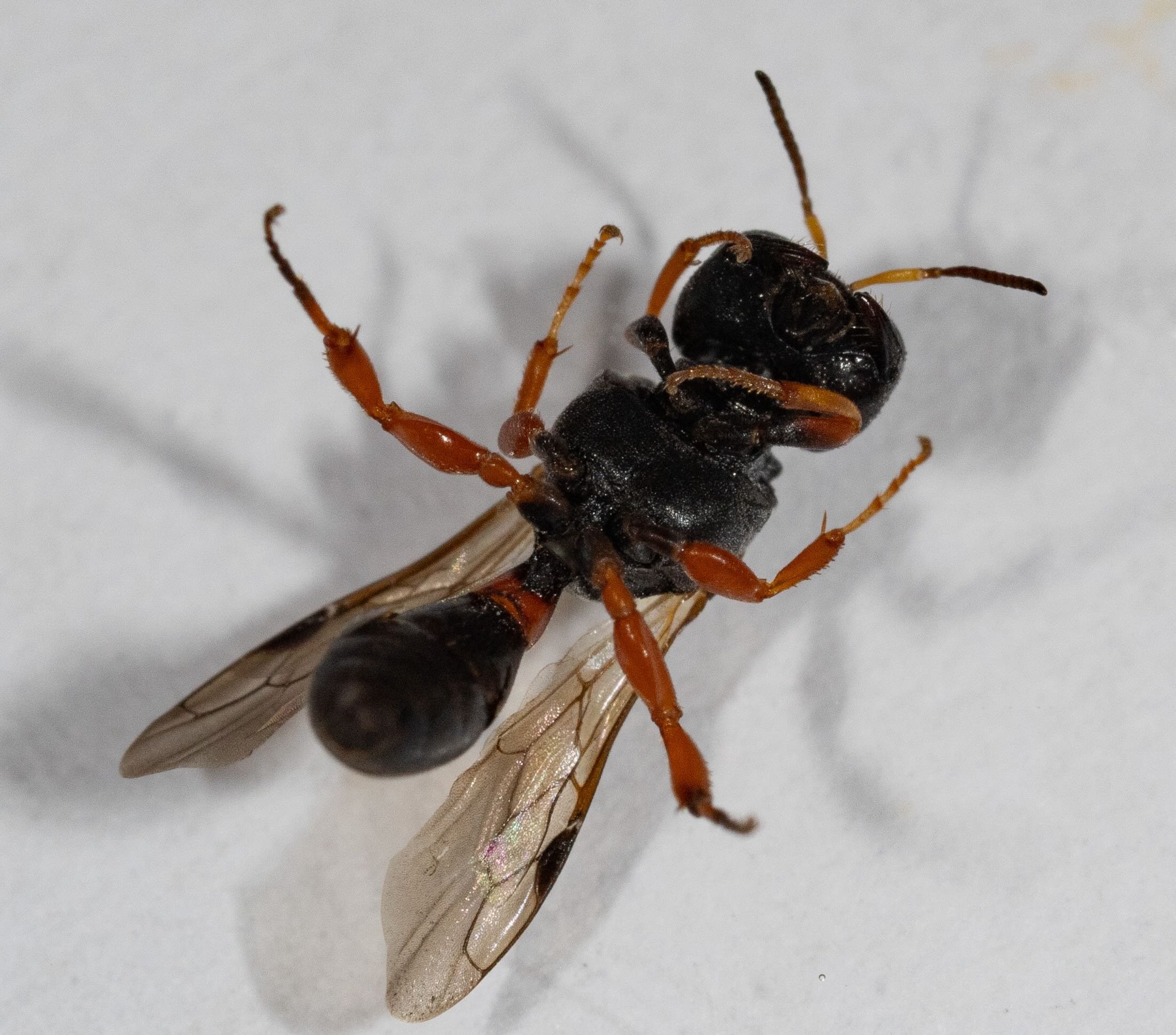
colour of legs & antennae
P. territorialis have:
- legs orange, with coxae & bases of femora black, middle articles of hind tarsi darkened
- scapes entirely yellow, flagellum brown
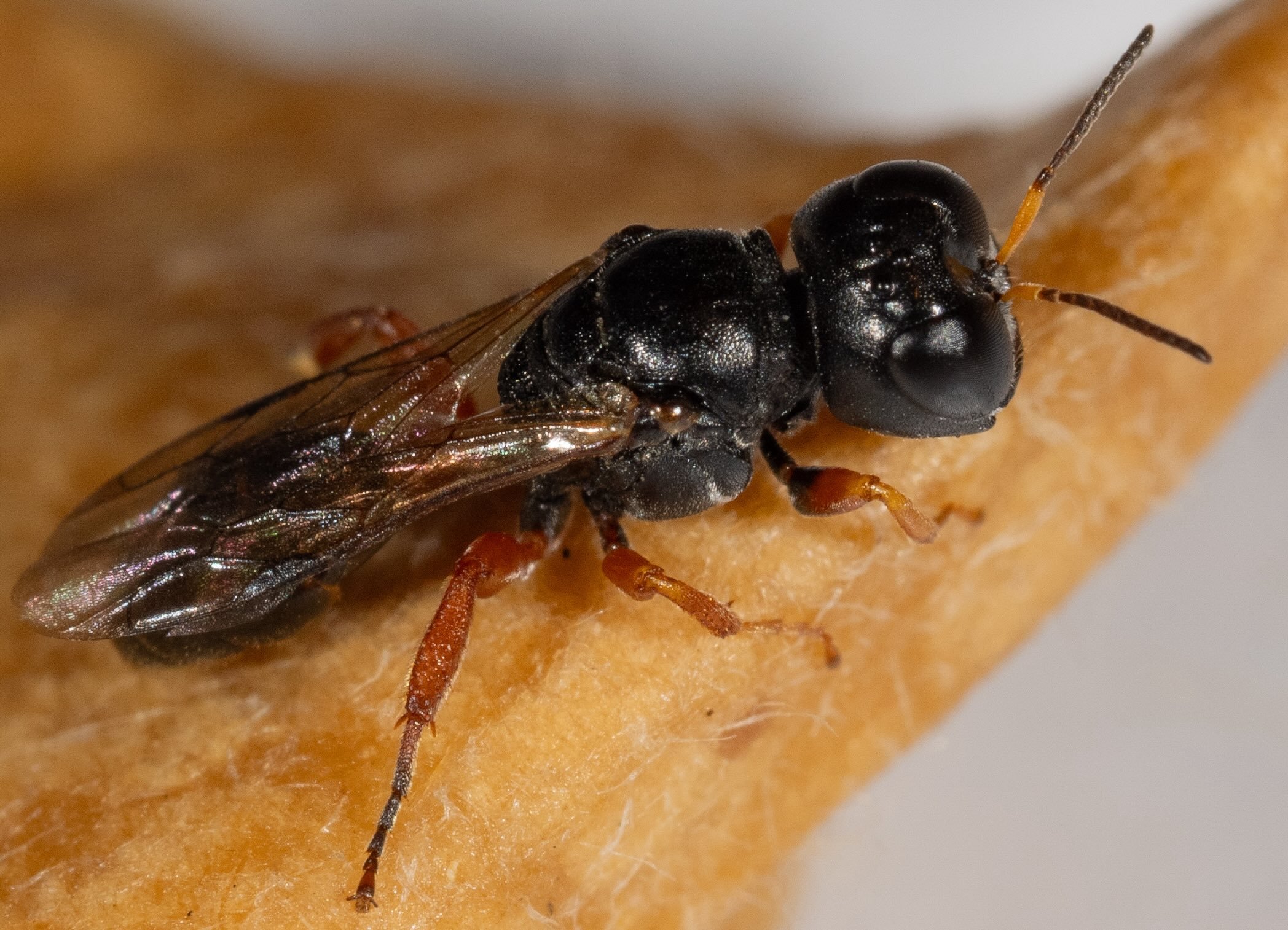
colour of legs & antennae
P. territorialis have:
- legs orange, with coxae & bases of femora black, middle articles of hind tarsi darkened
- scapes entirely yellow, flagellum brown



































